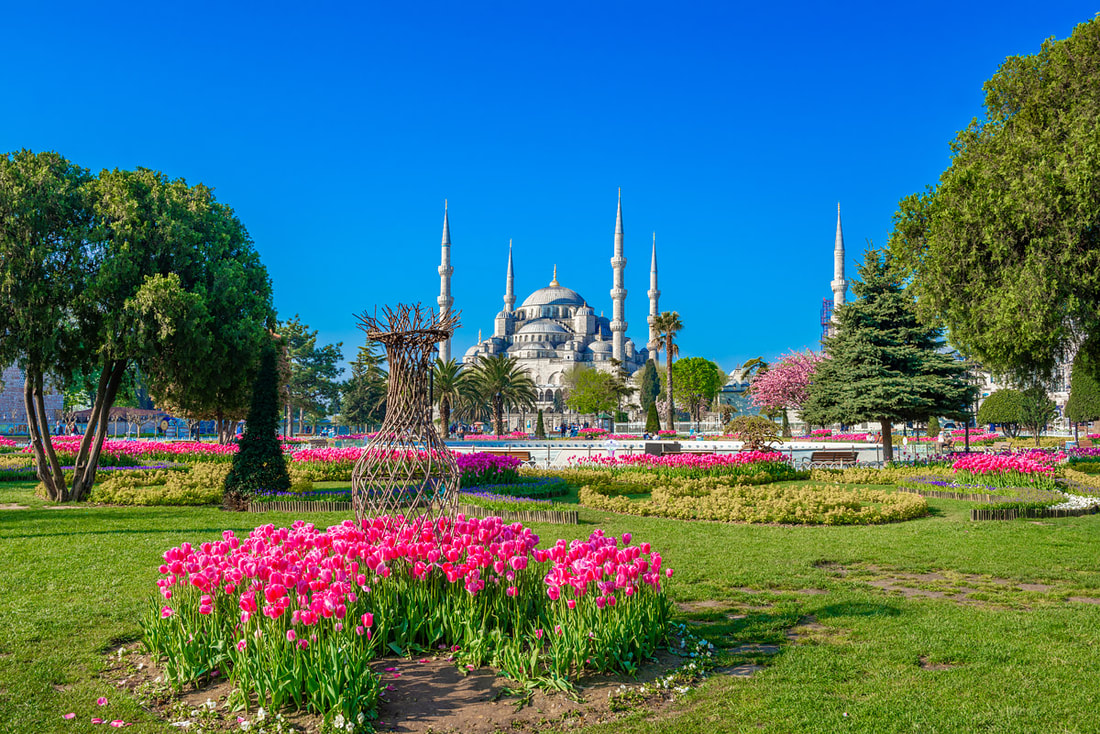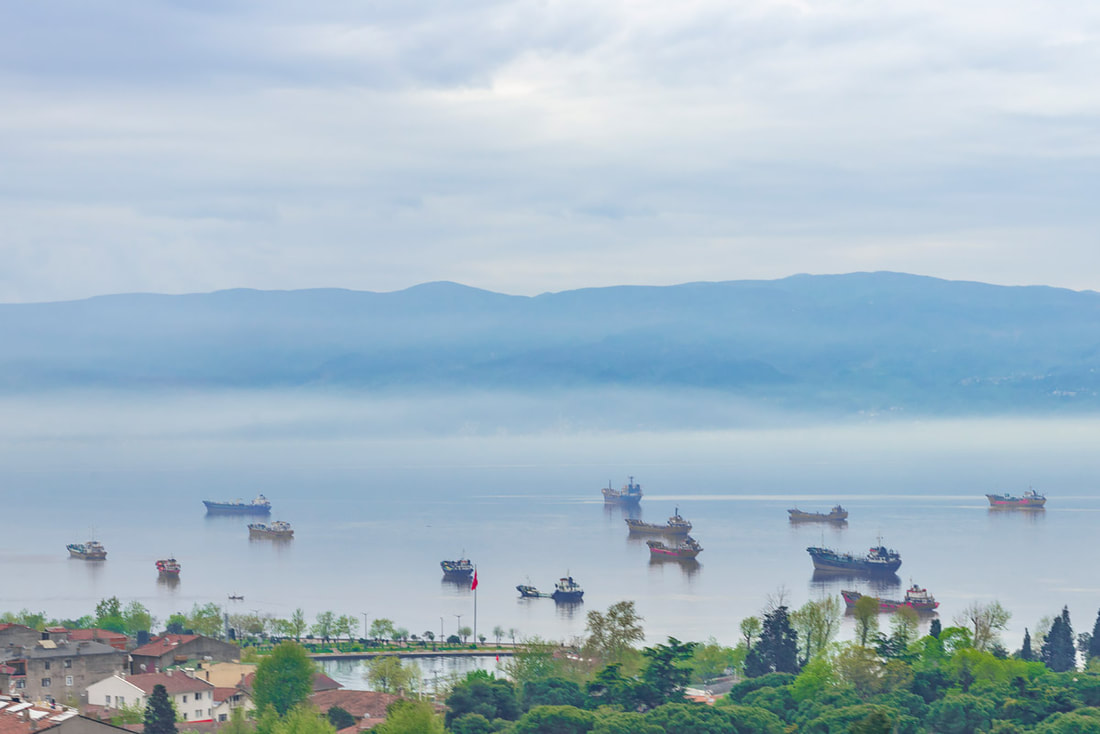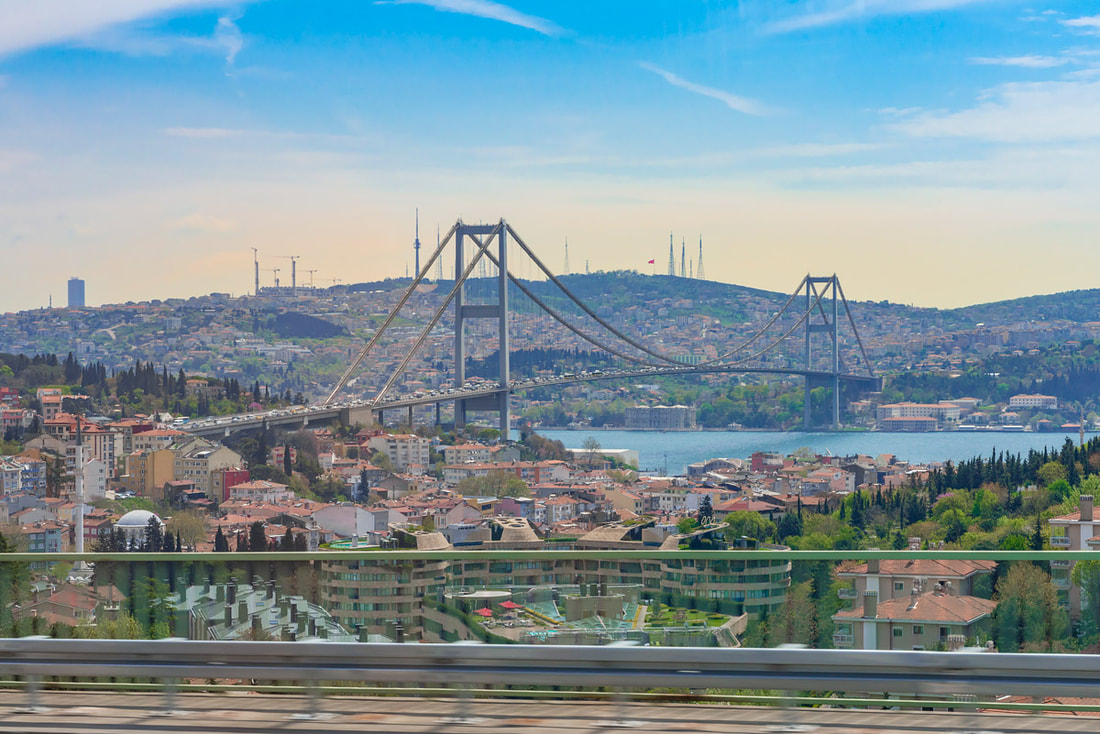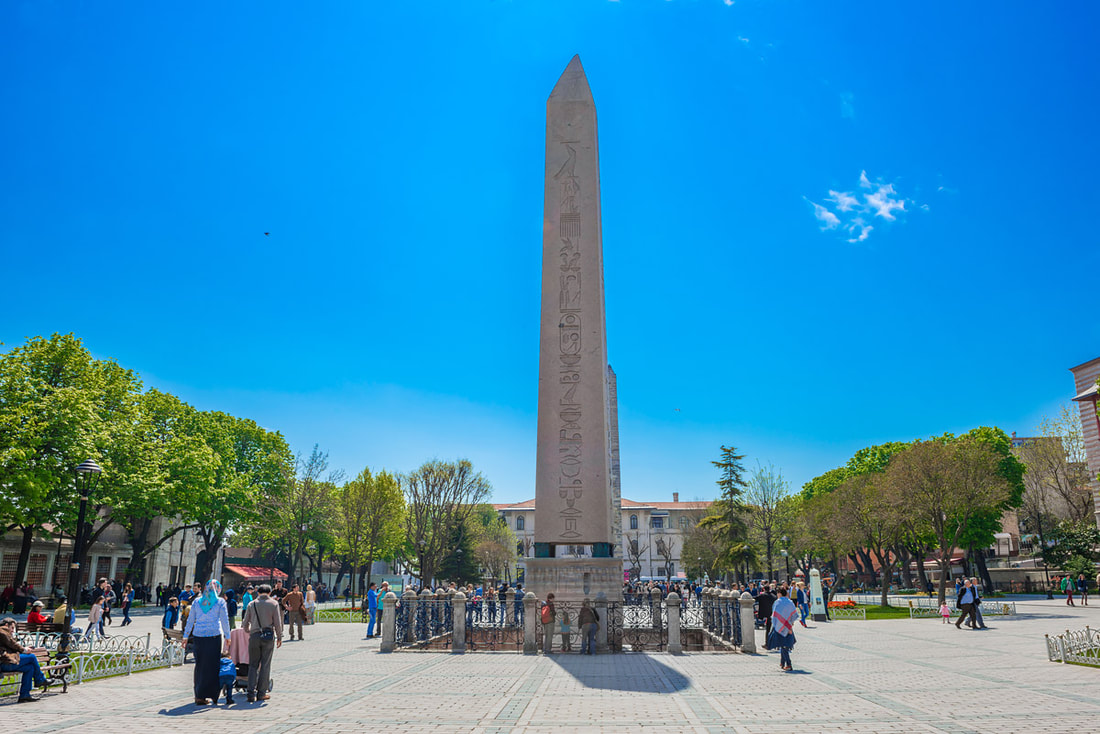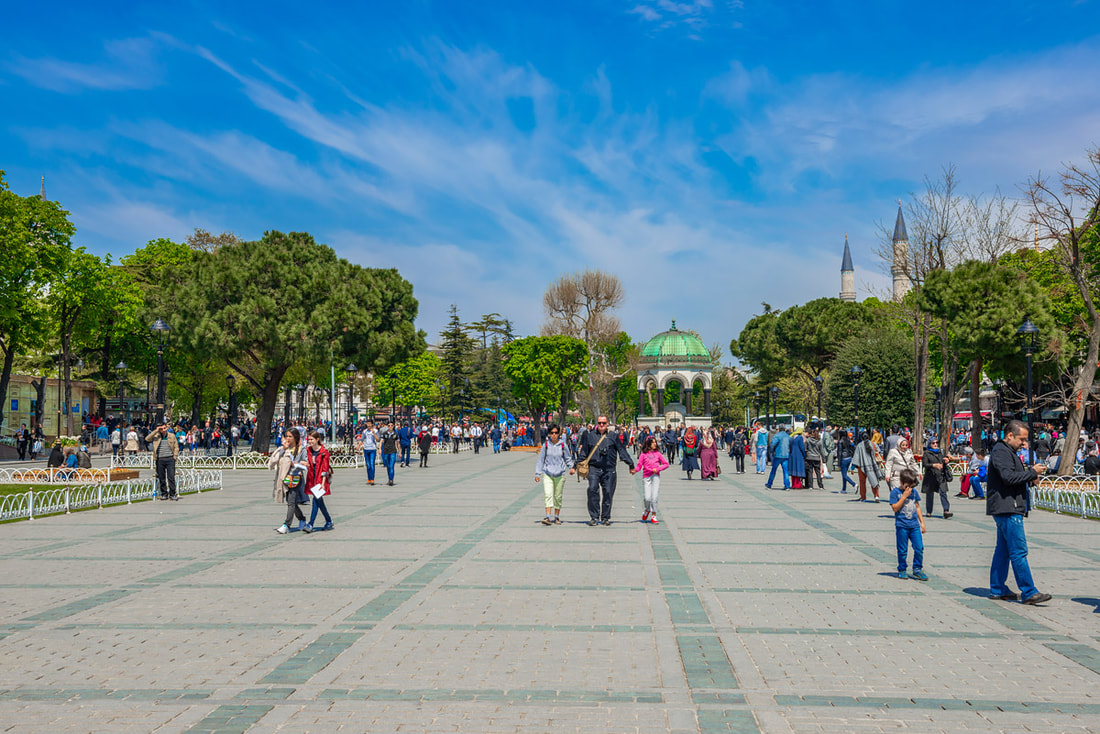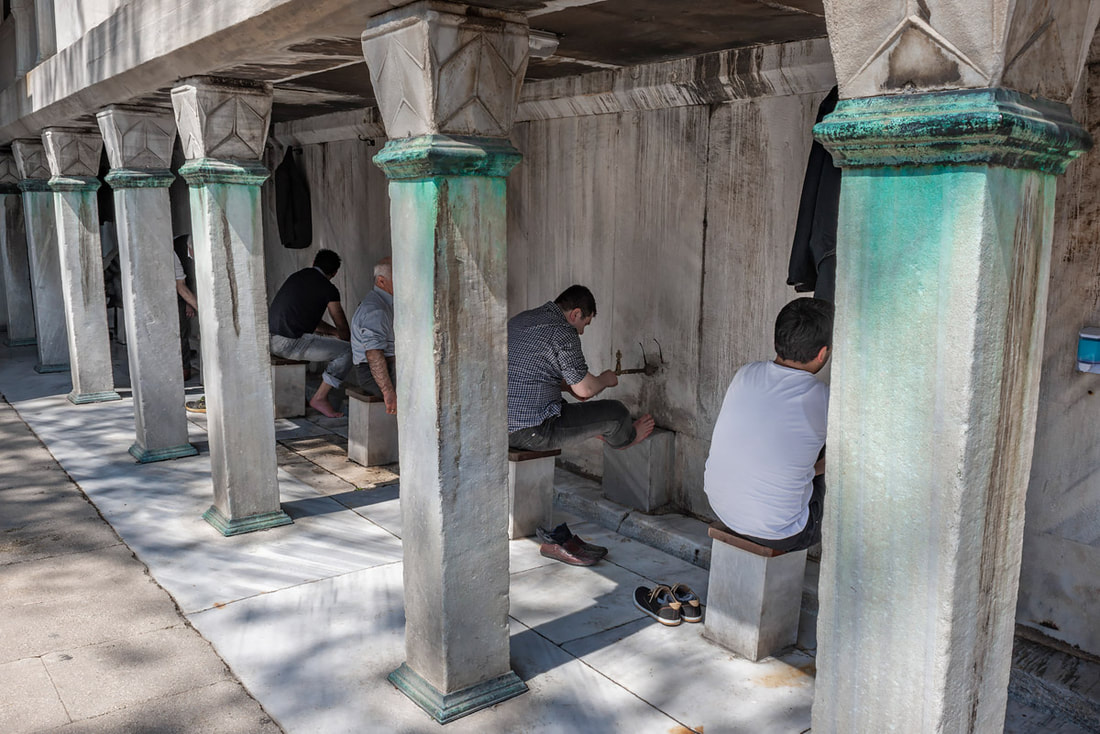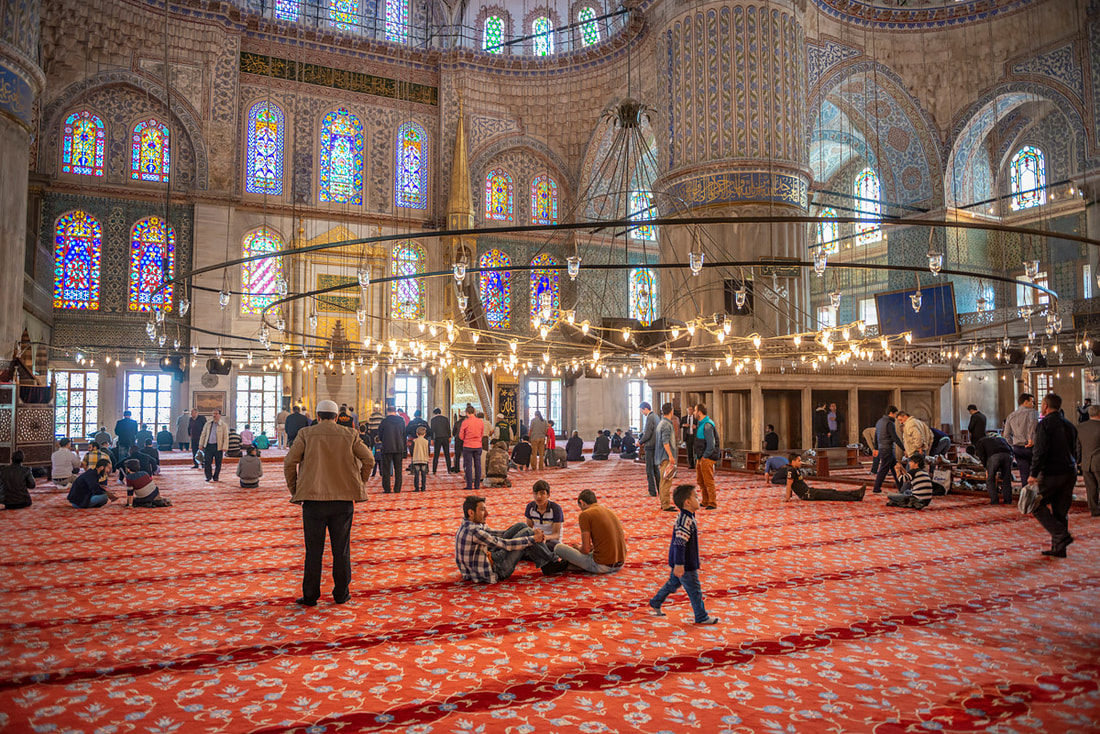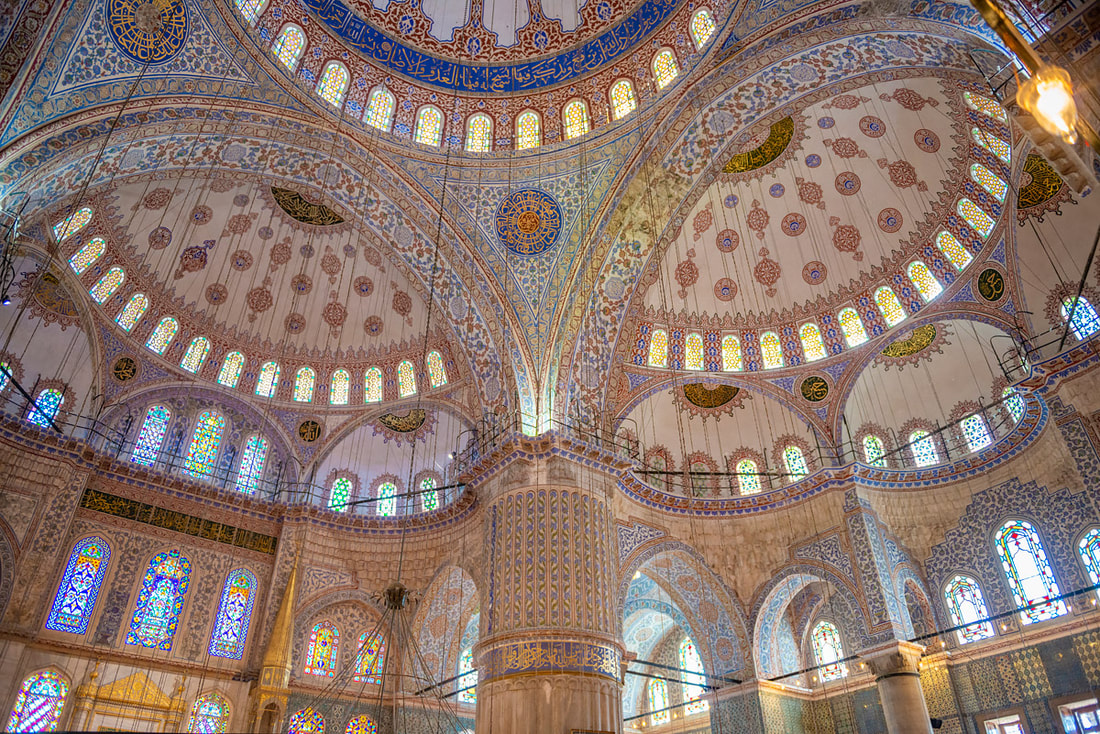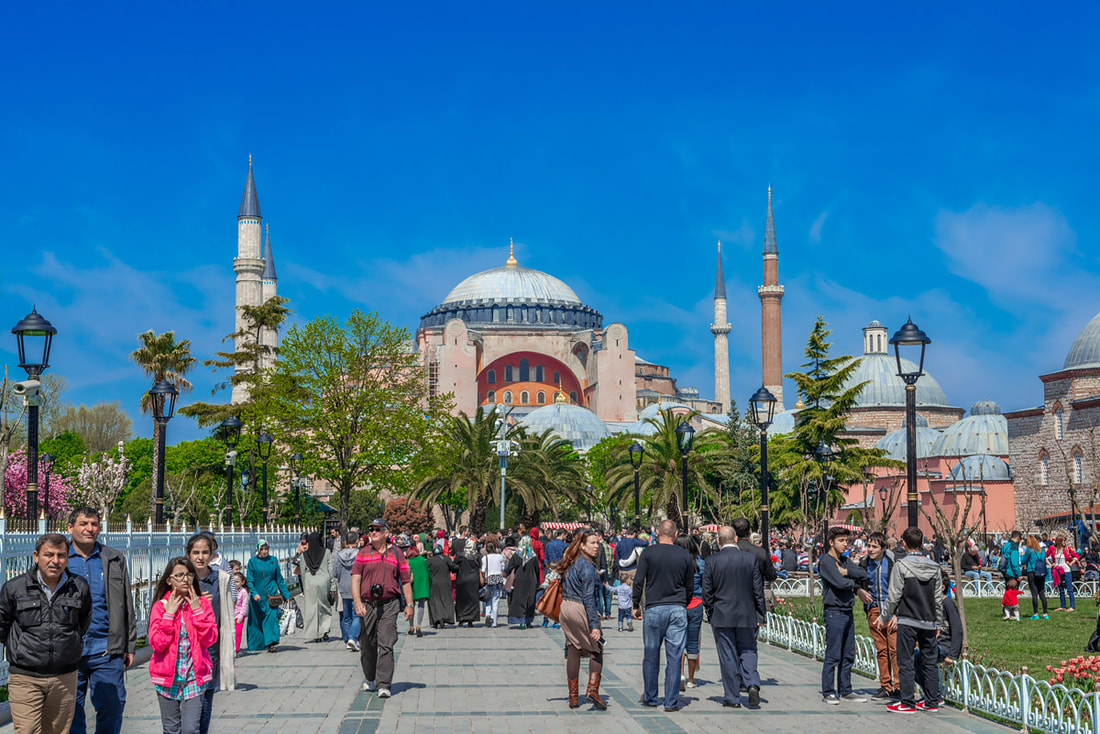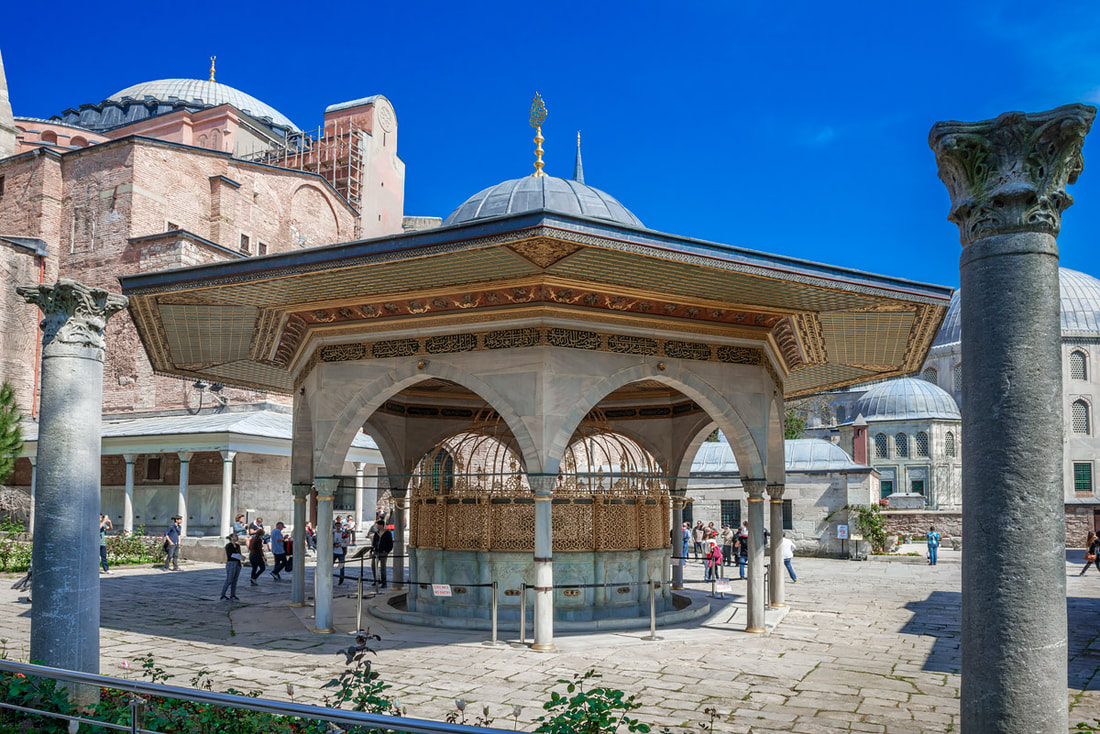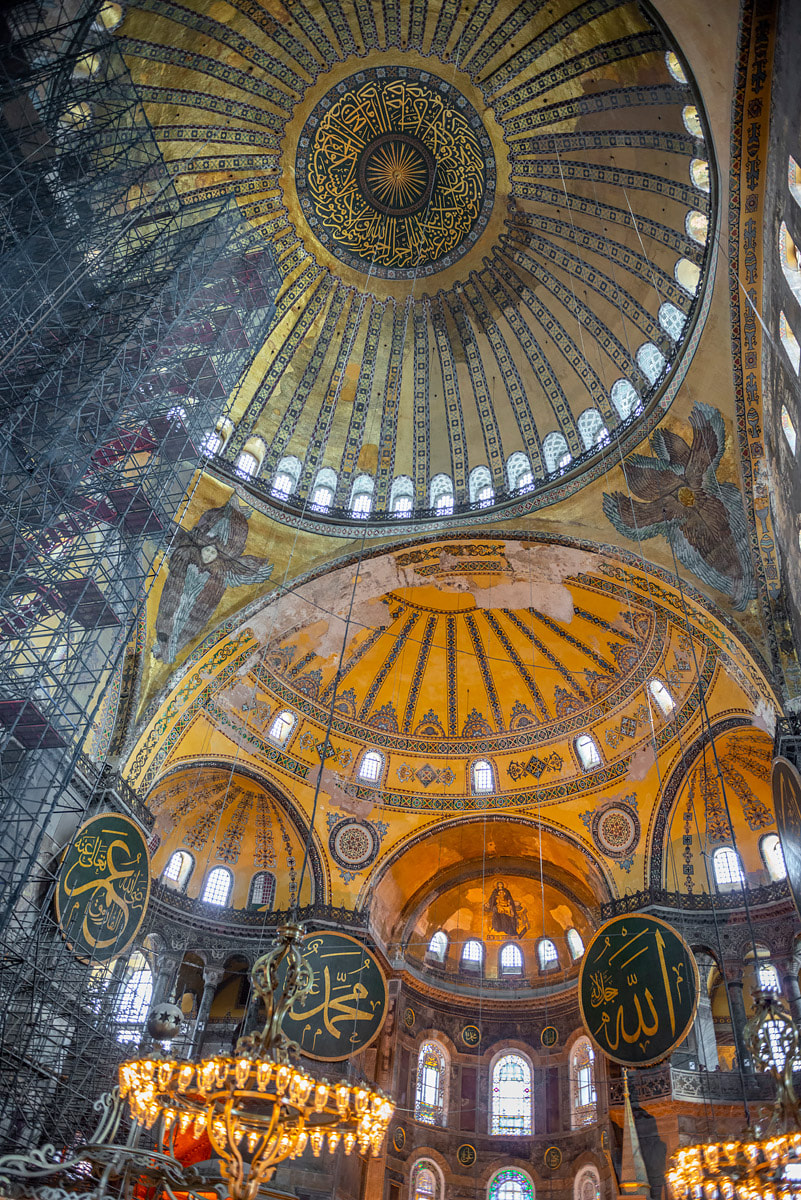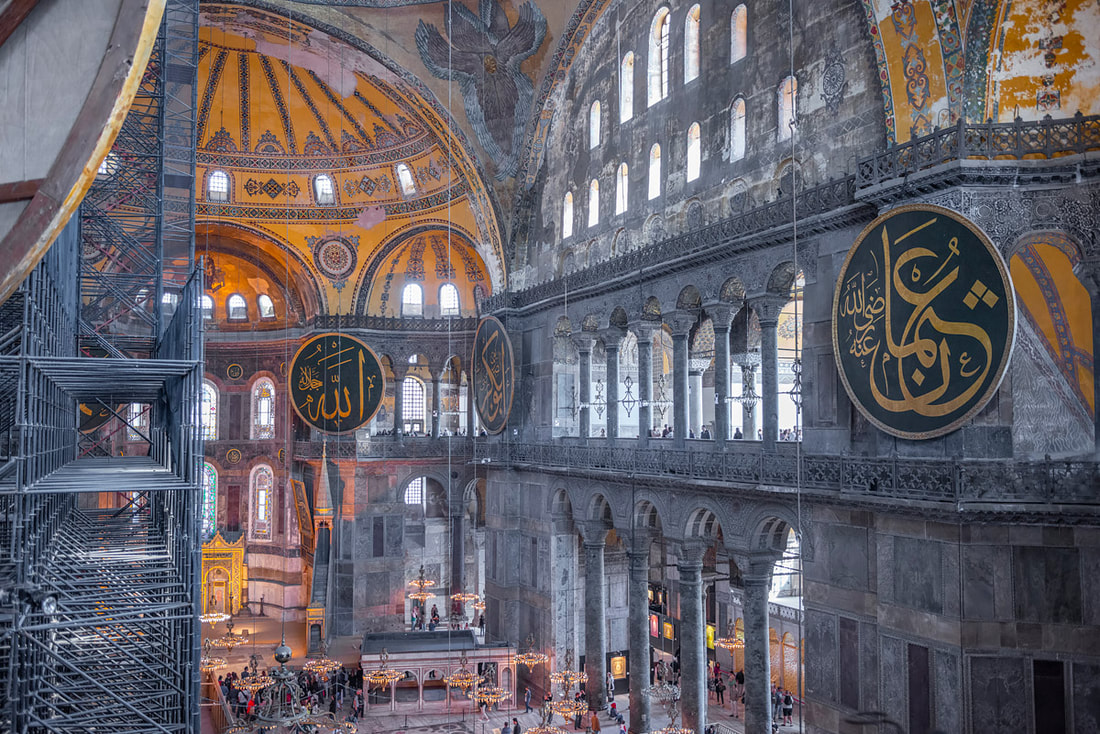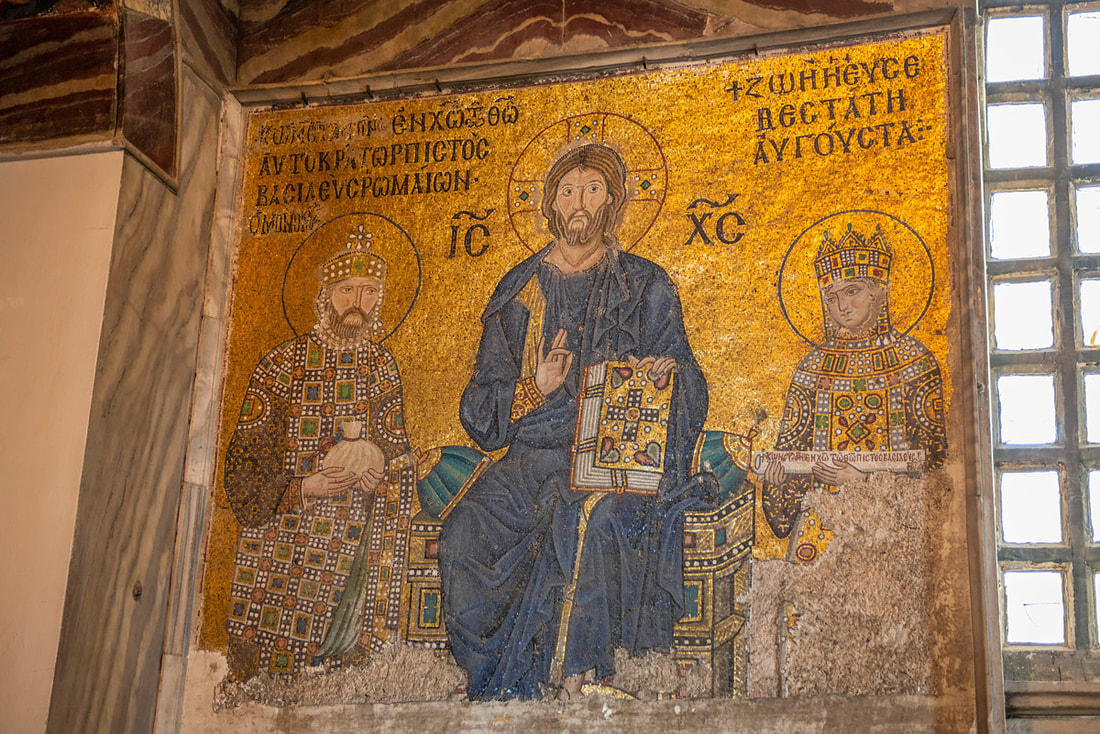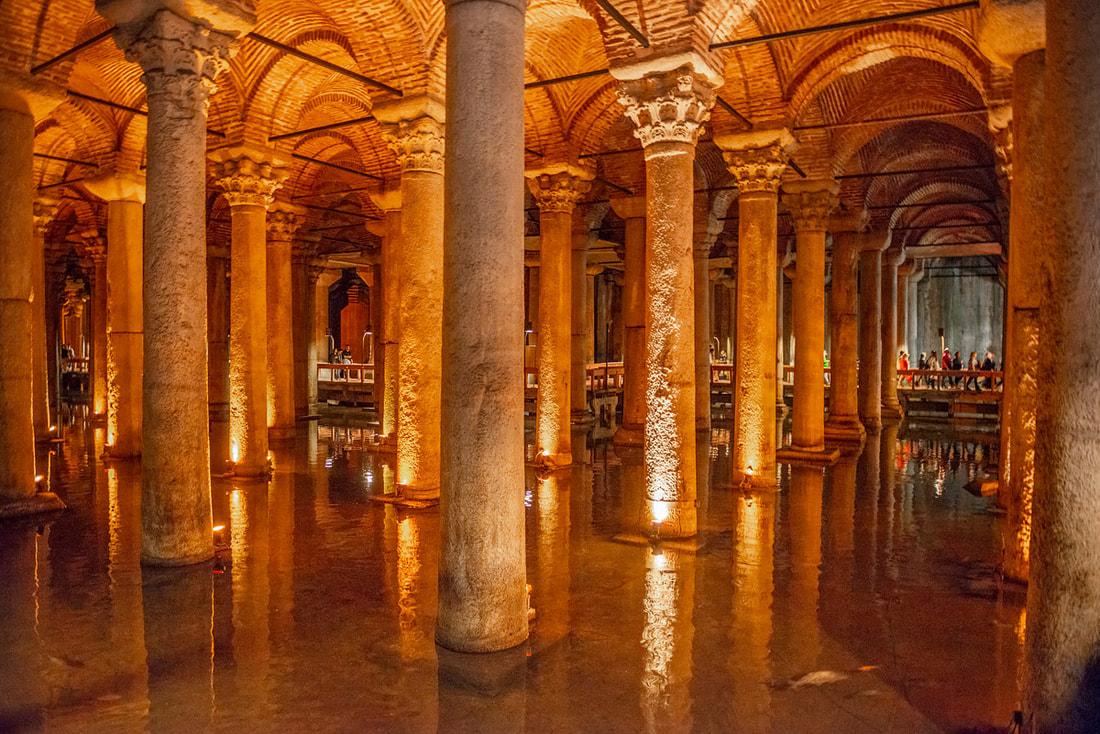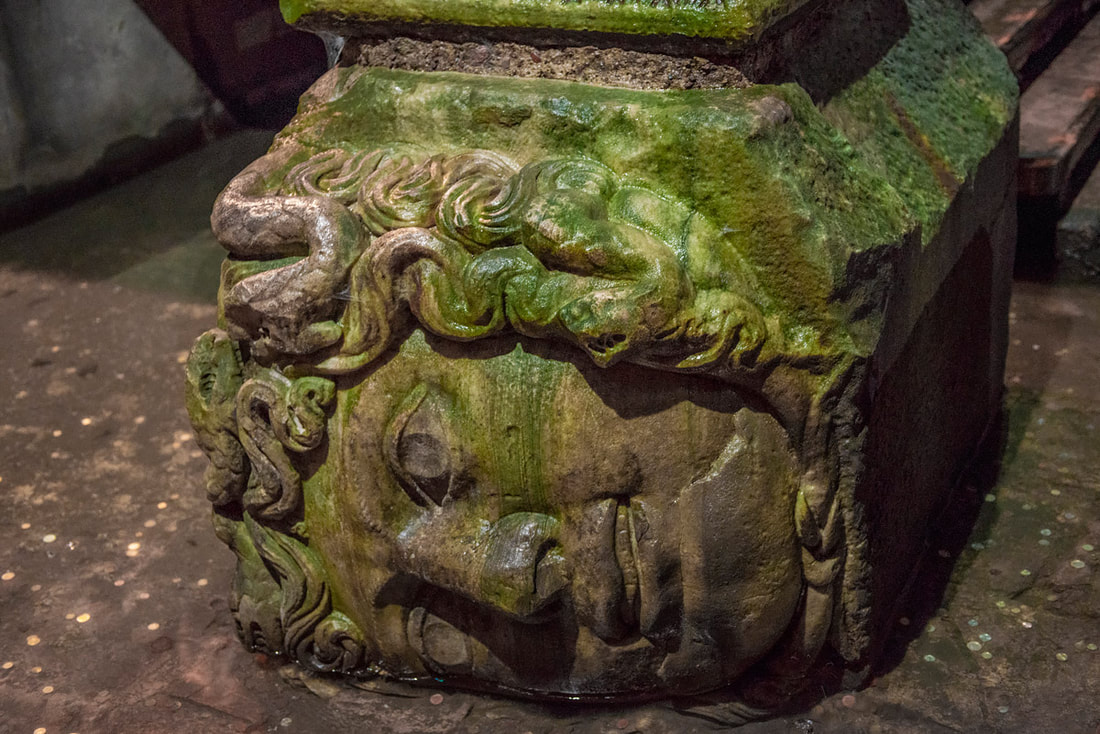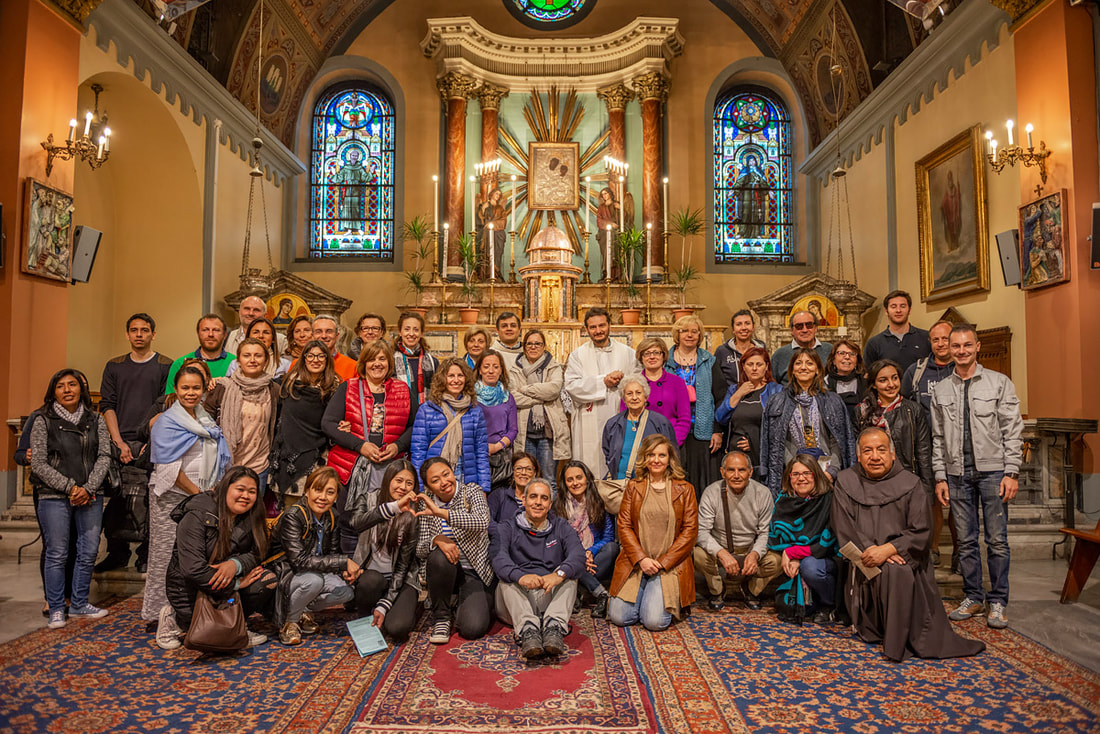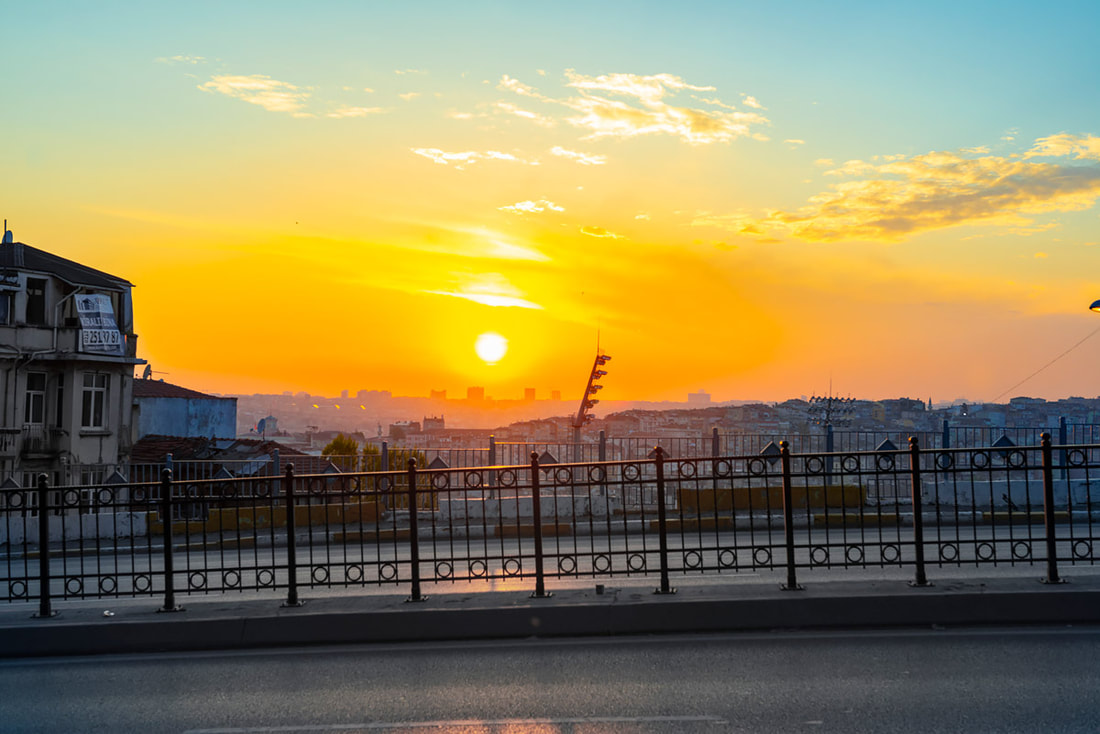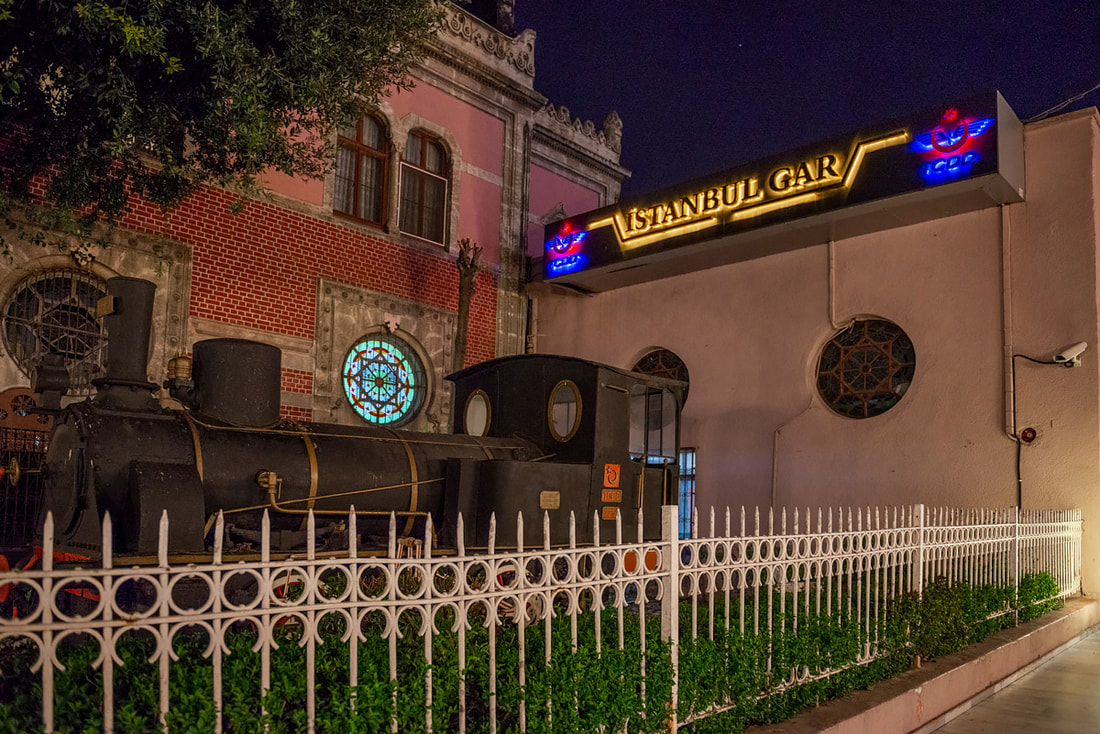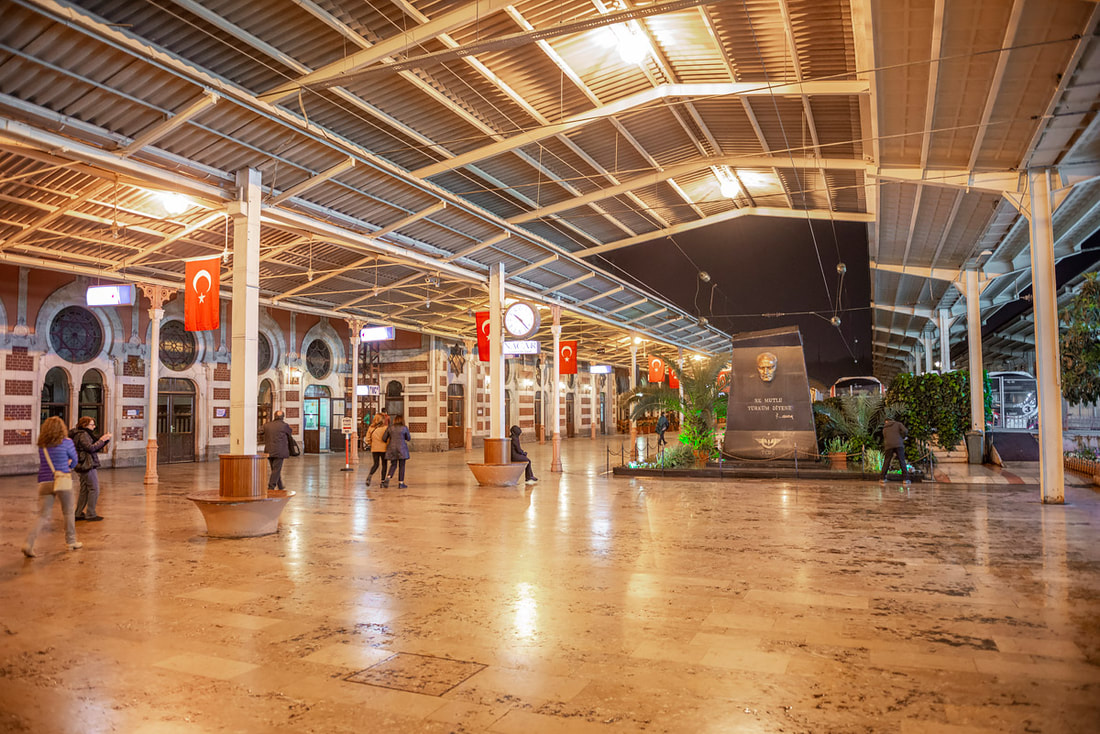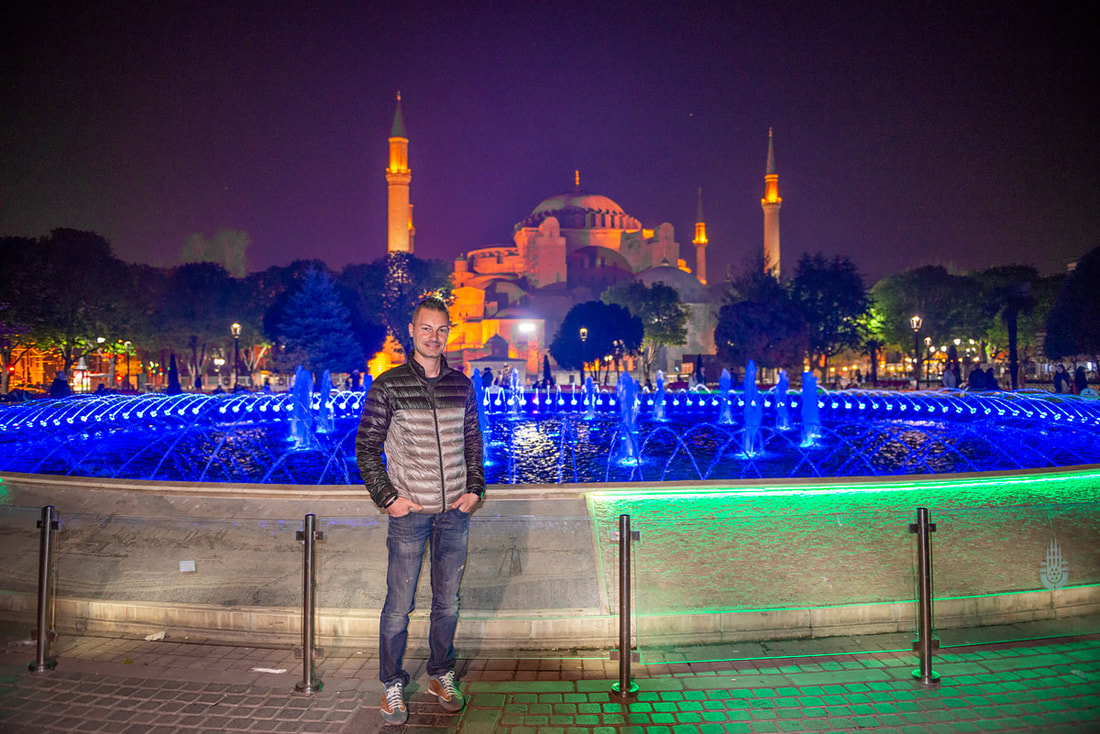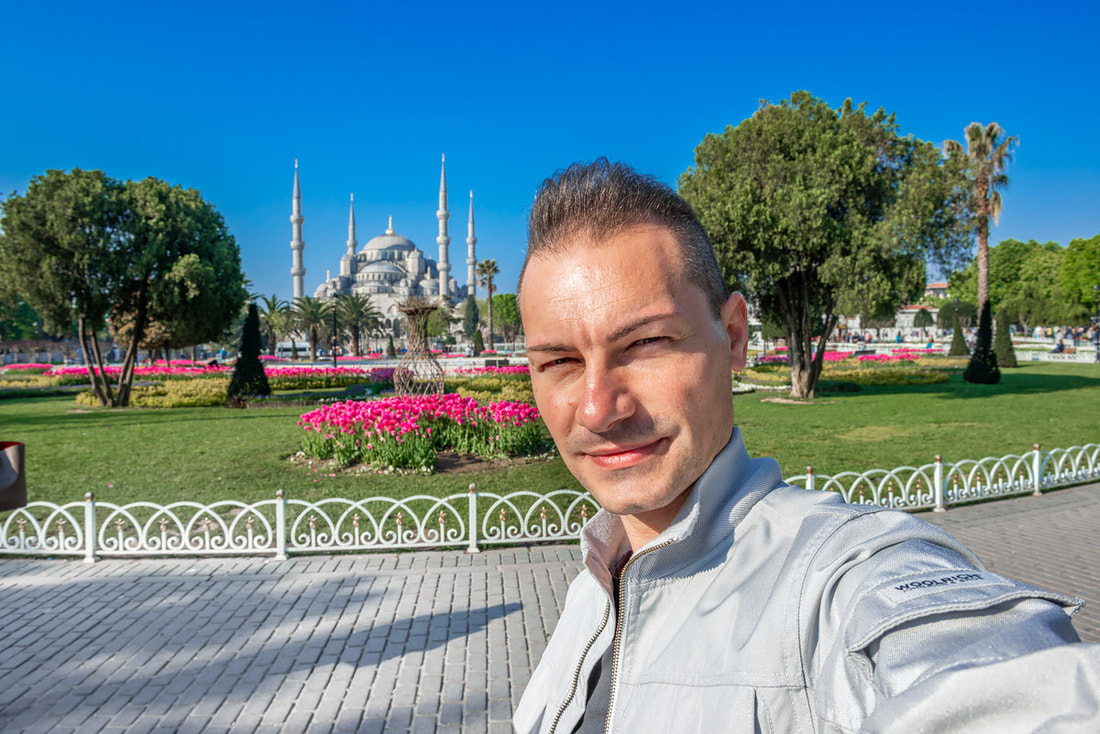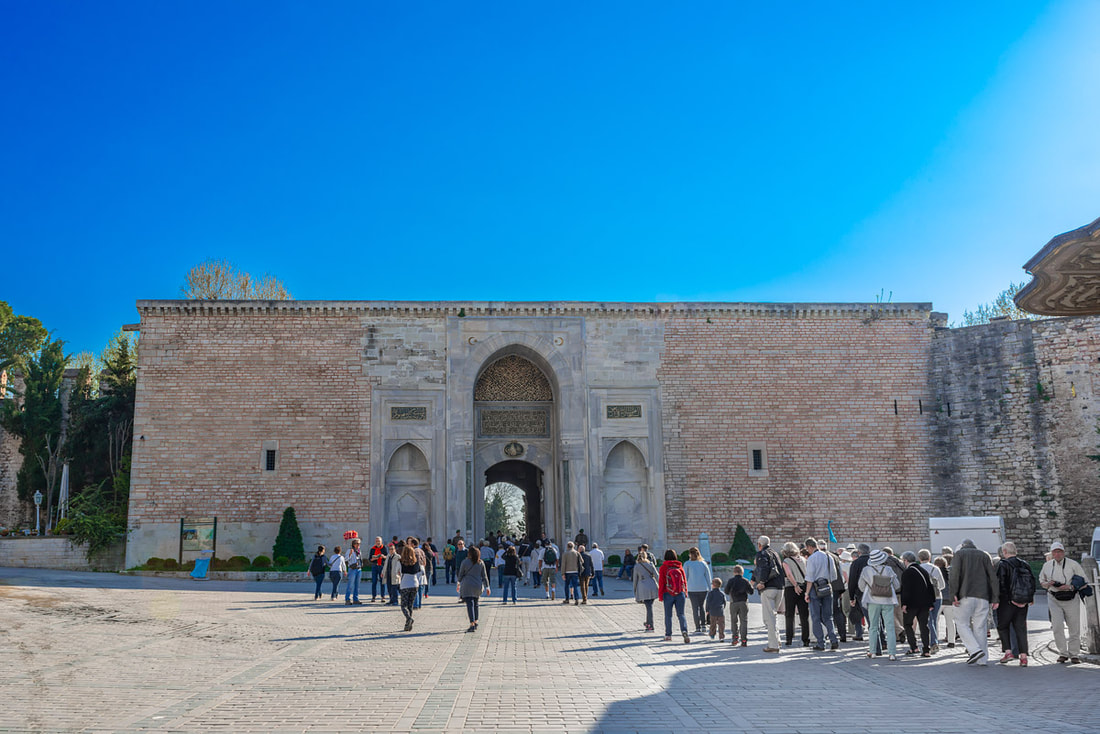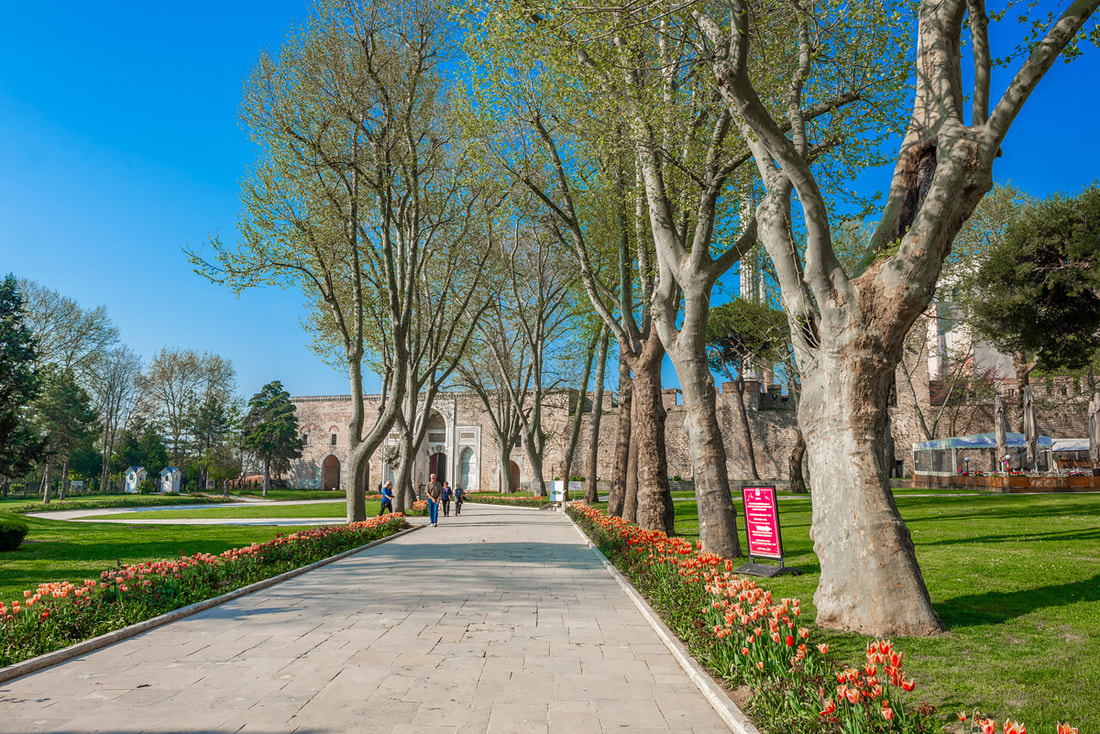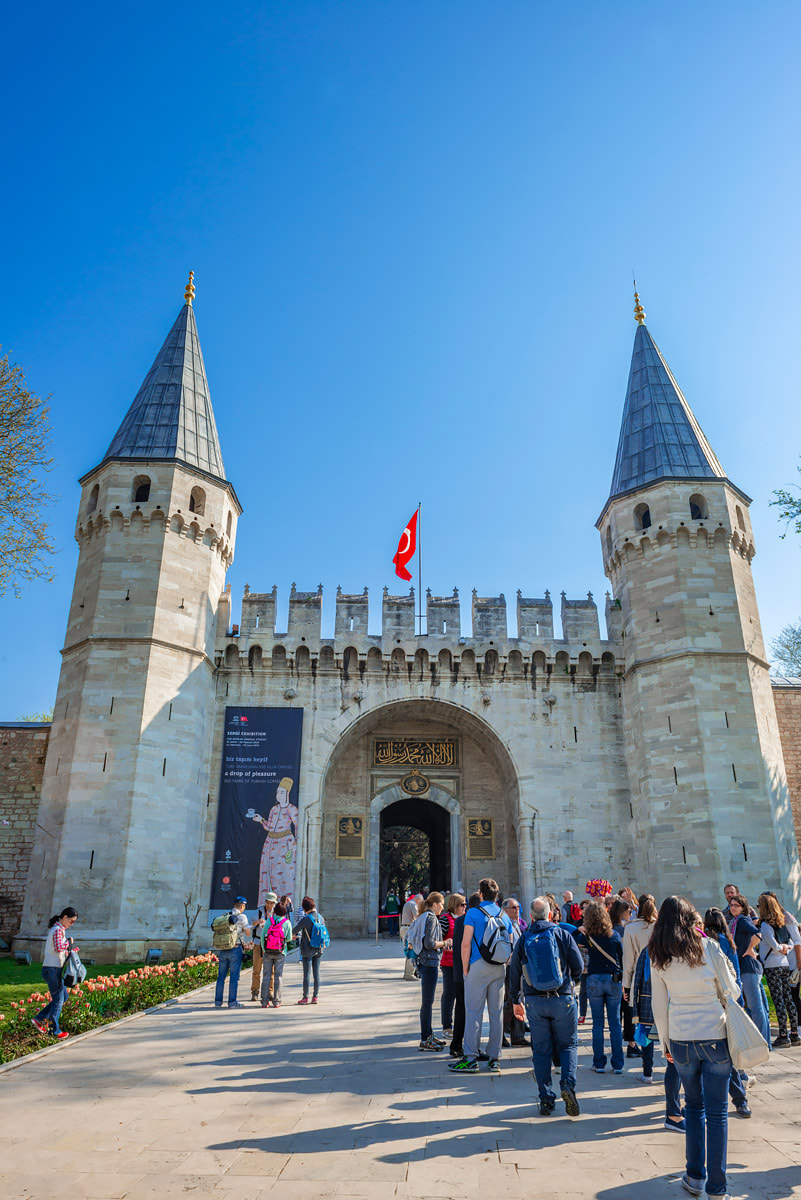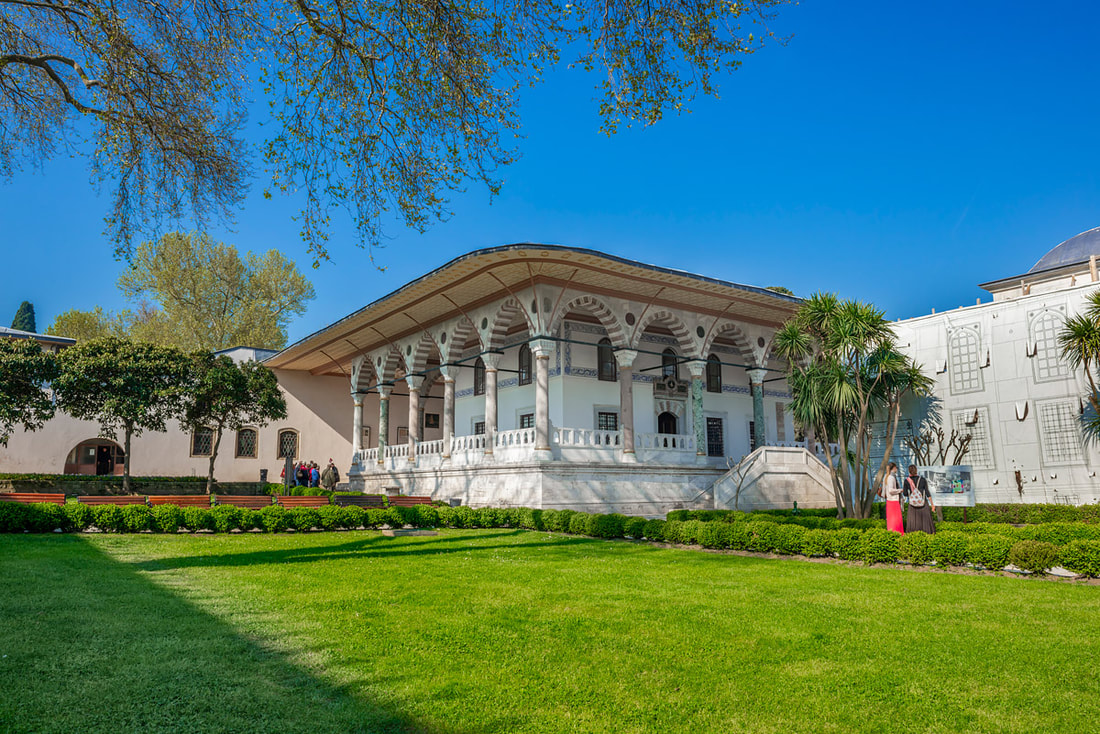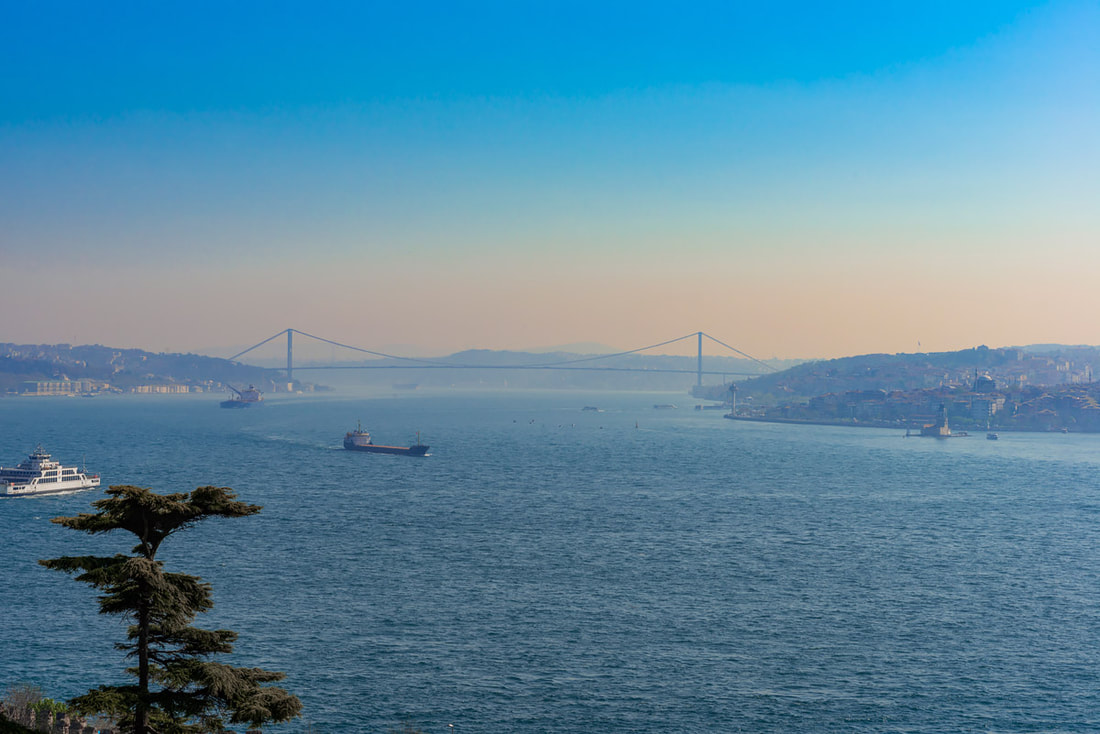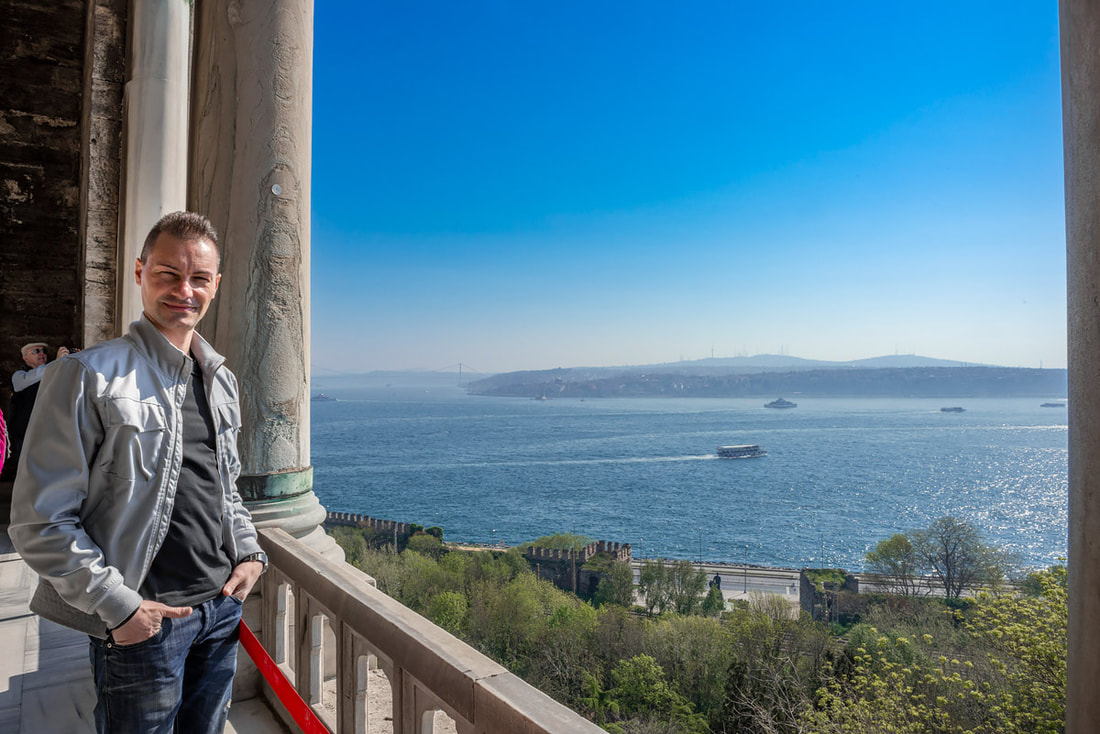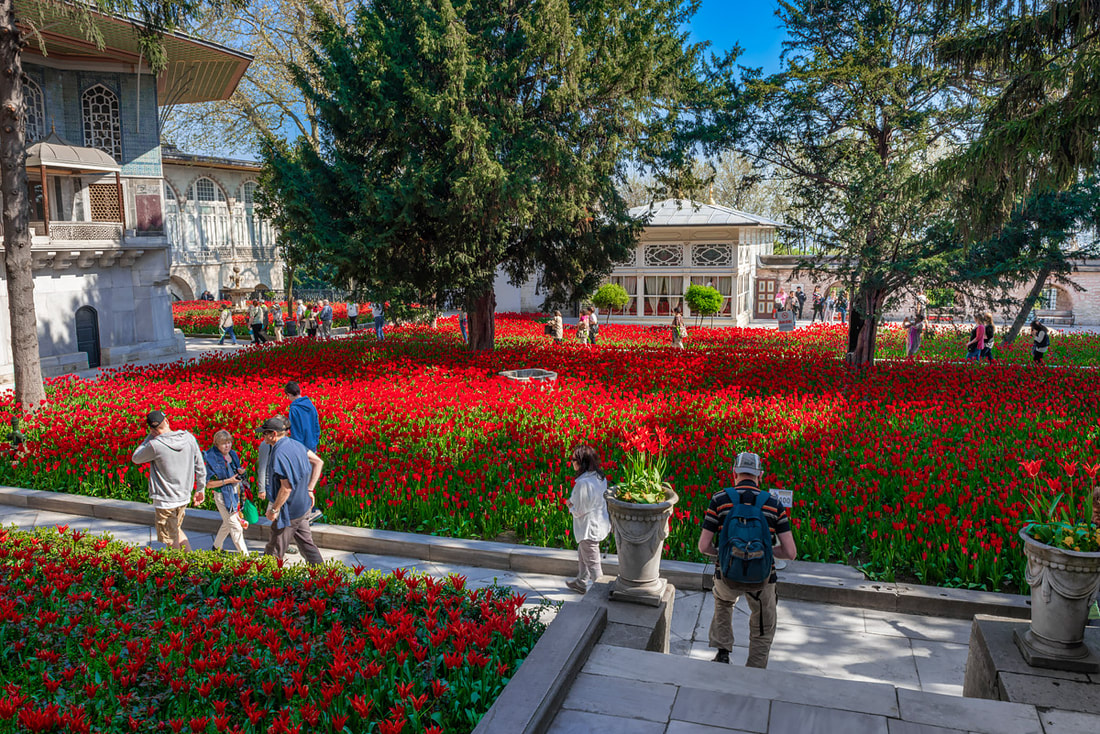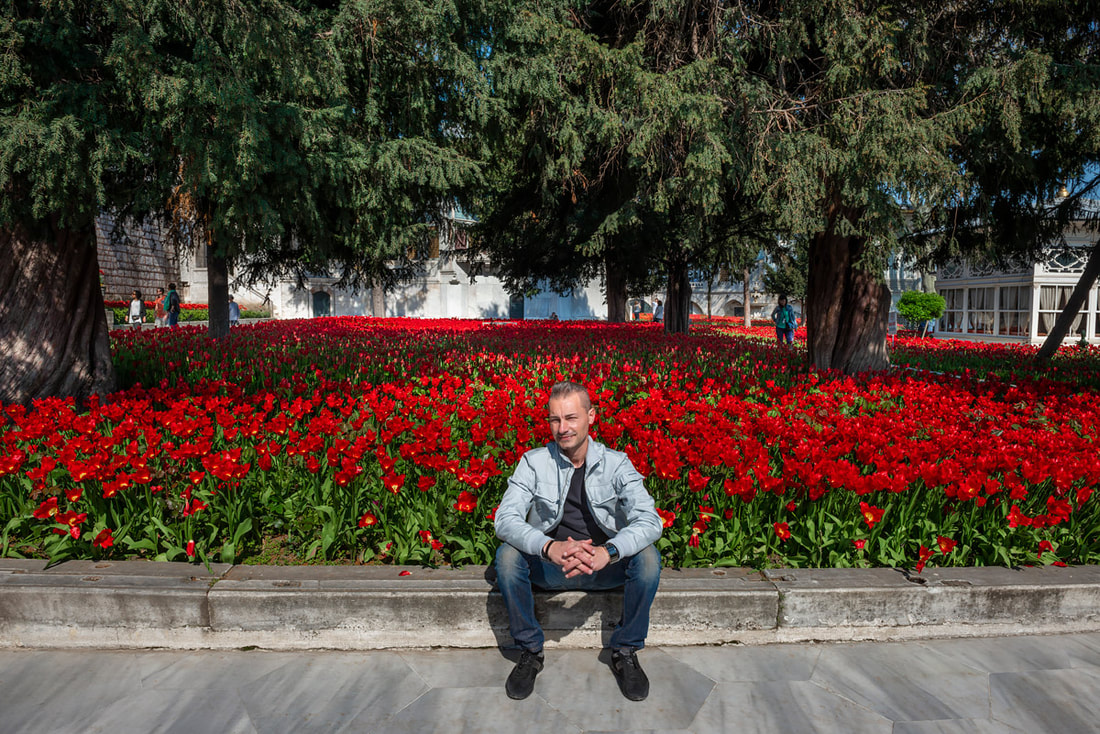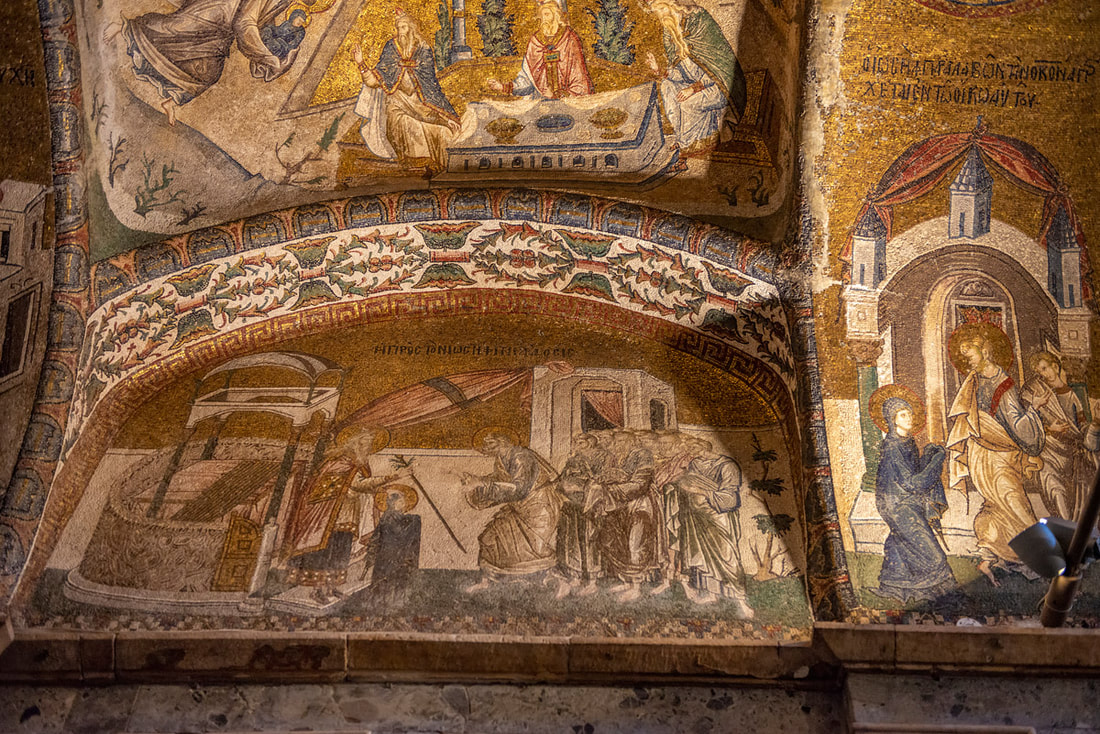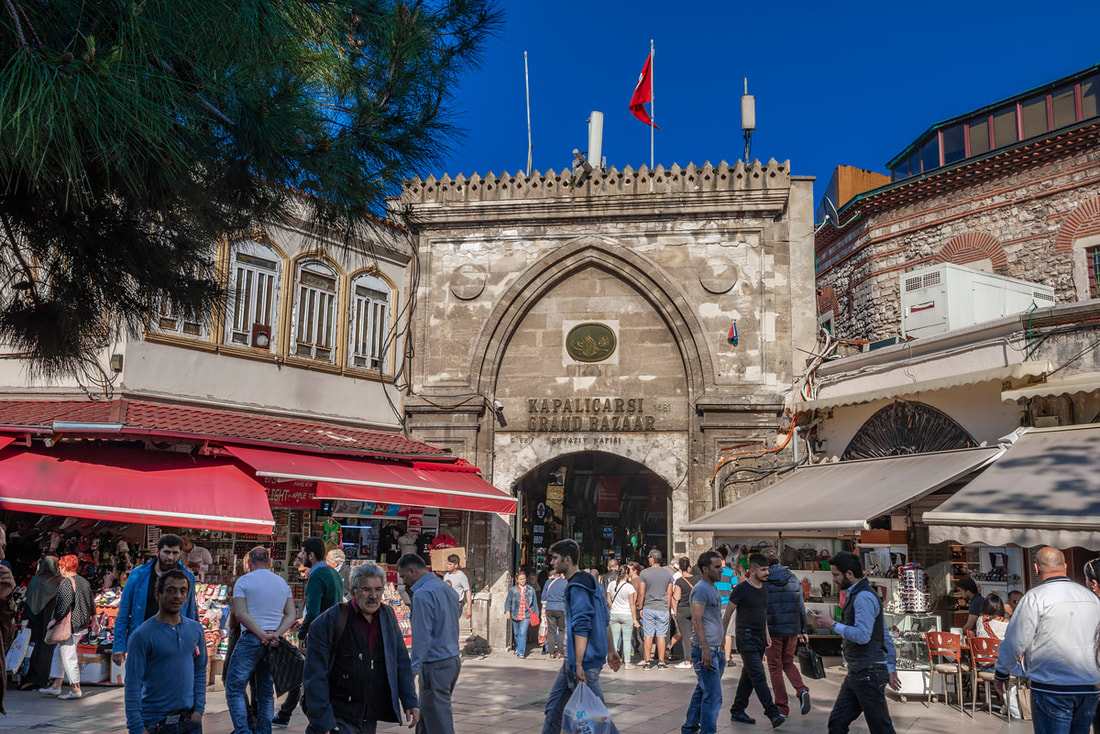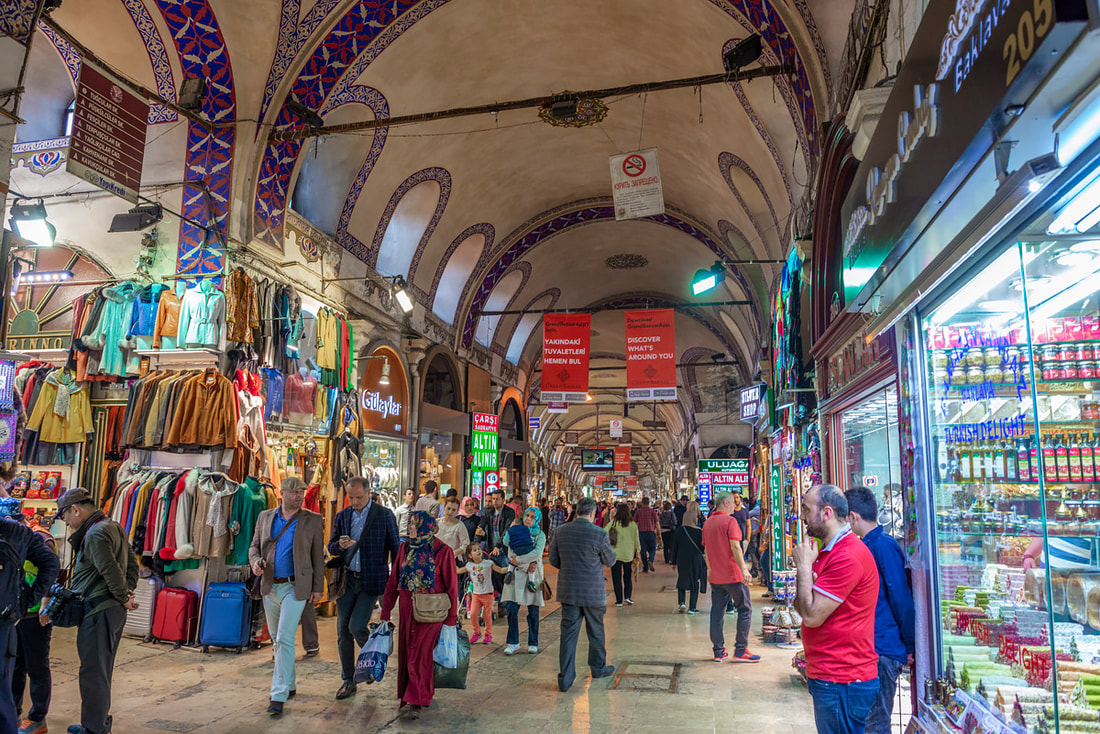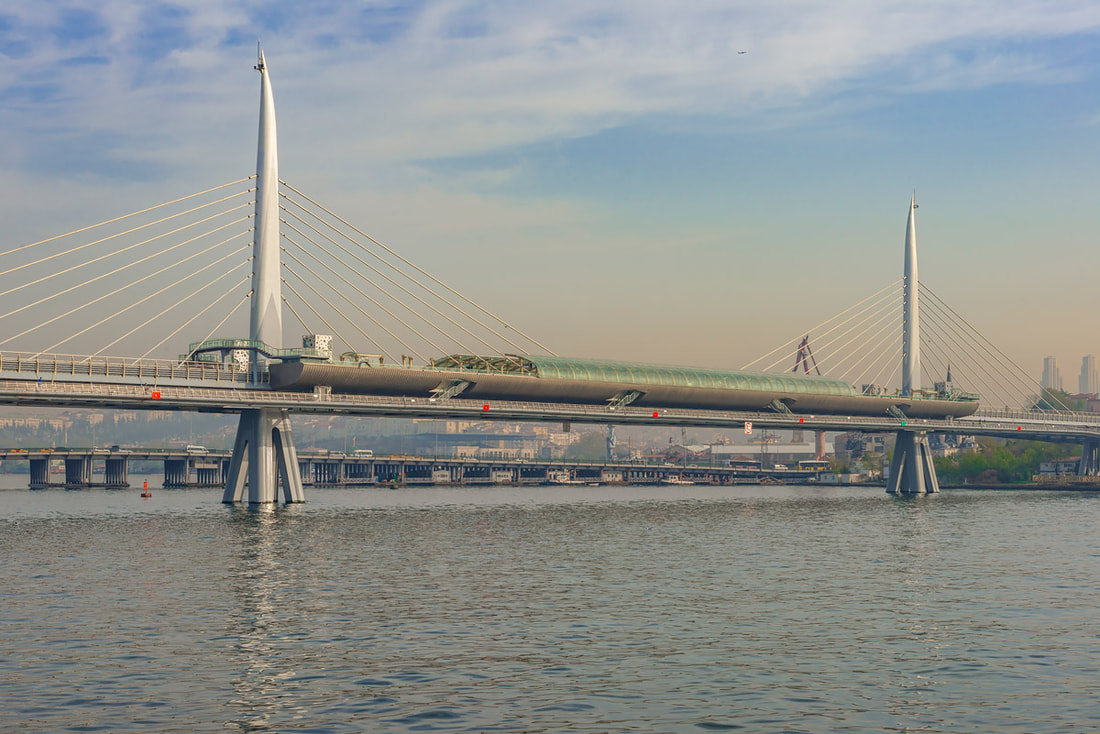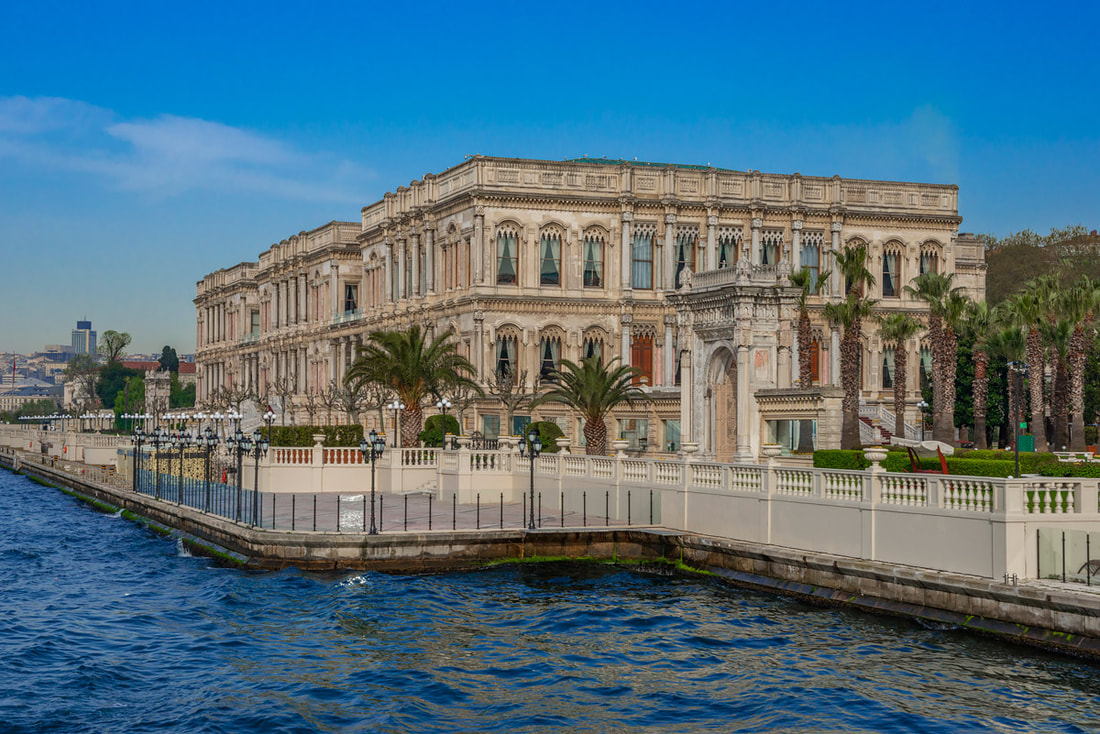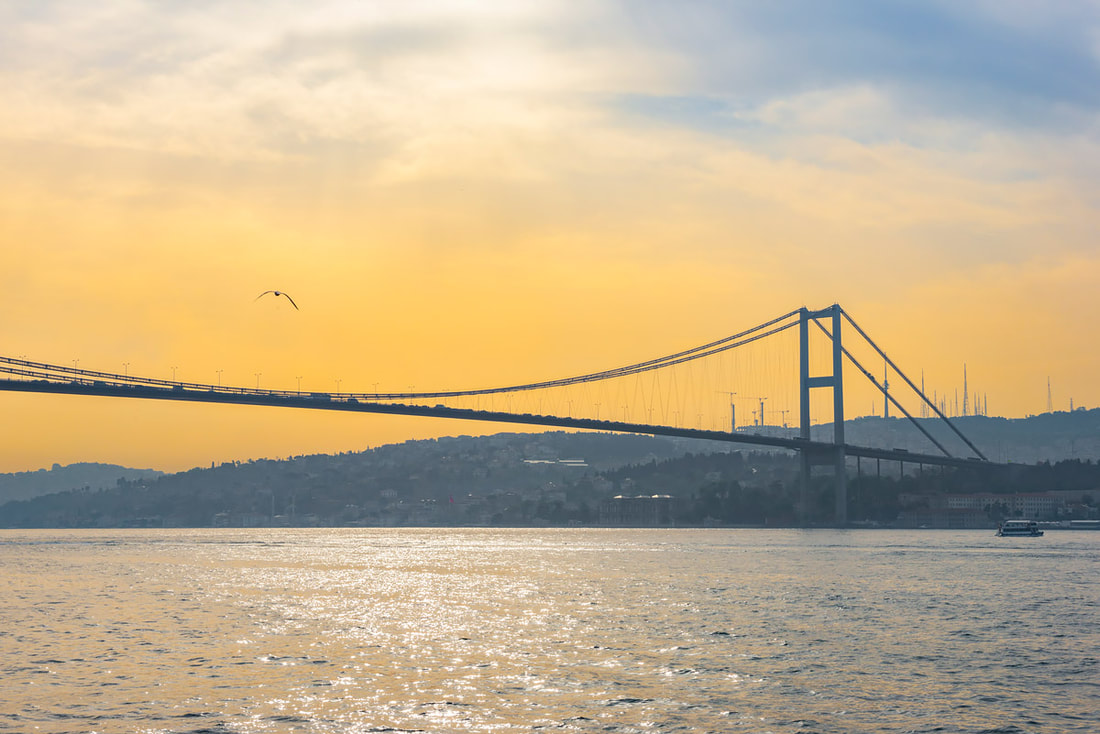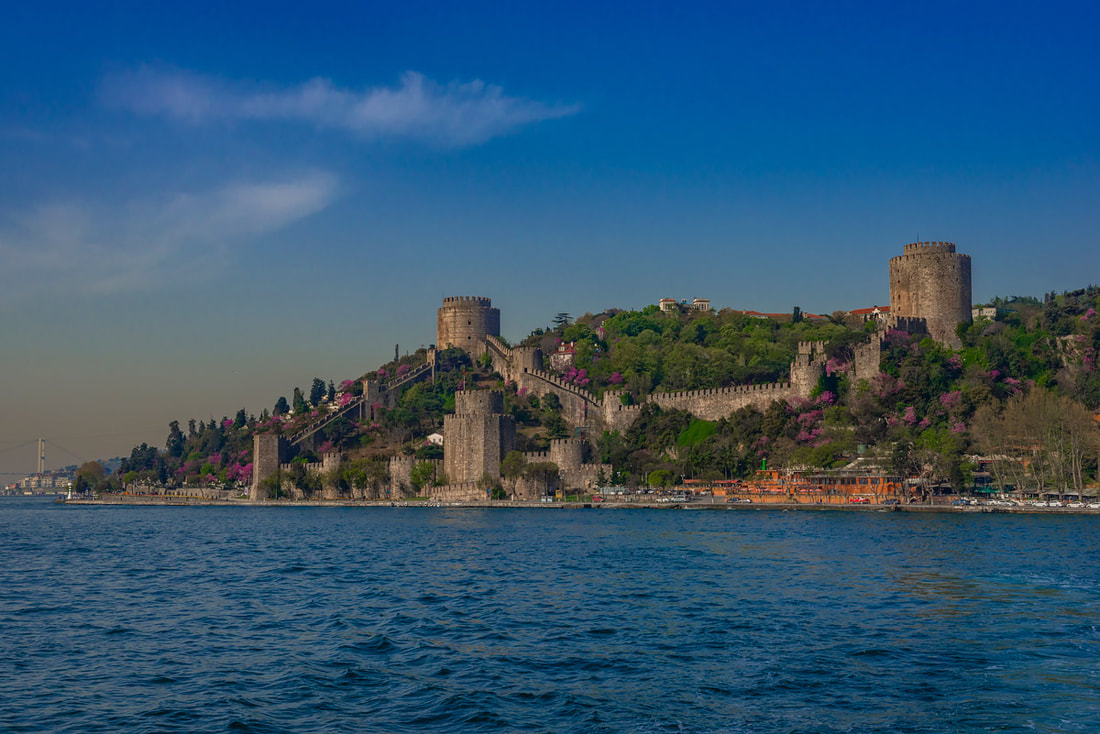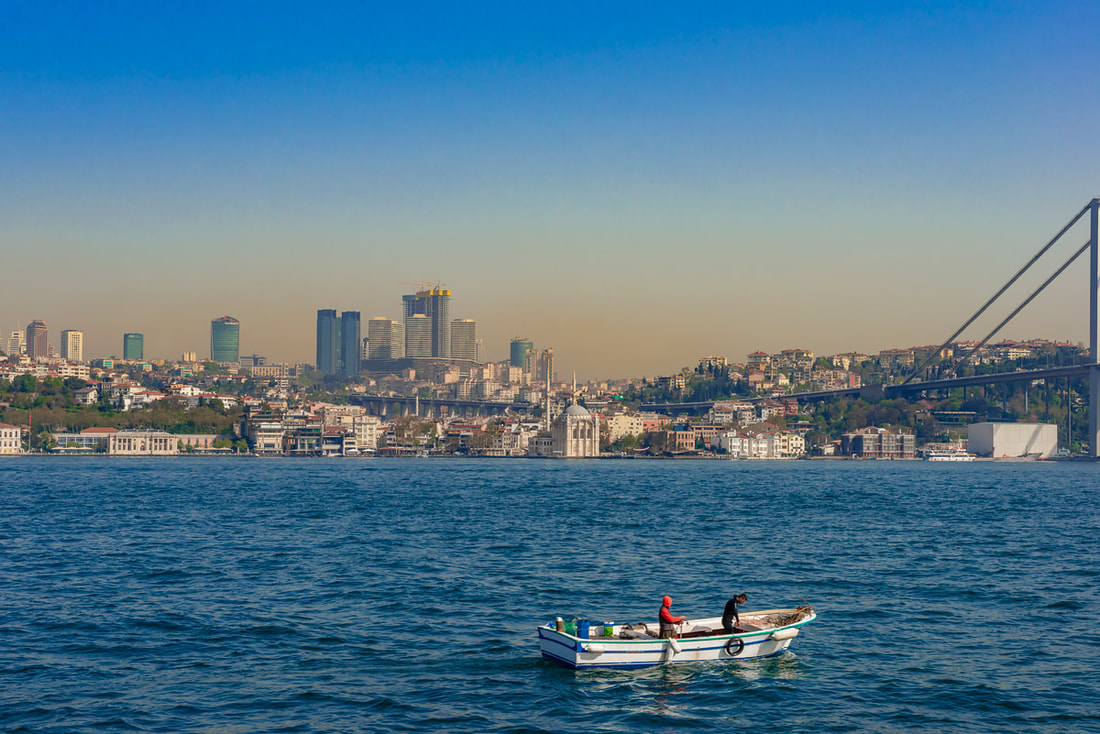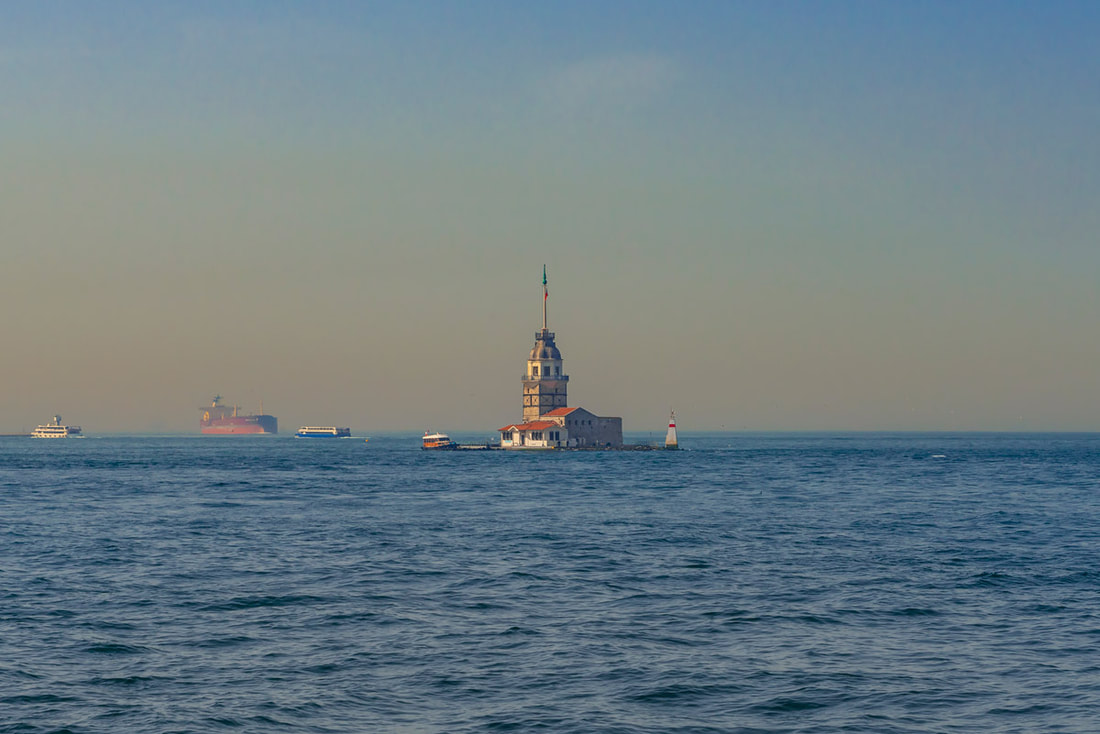By Antonio MalaraThe journey would take about five hours and when we left Ankara for Istanbul that morning at 7 AM, my mind was a mix of feelings. More than anything else, there was the excitement of the long-dreamed destination together with a hint of melancholy for the long journey that was about to end. Along the way we stopped twice to stretch our legs and have a coffee, in one of these two places I saw a waitress who had a particular beauty. Two gray eyes with a deep gaze and a hybrid complexion between light and dark skin. We resumed the journey and while I was looking at the views from the window, I always had that particular beauty in mind. Unlike the beautiful scenery seen during the whole trip exploring the Turkish territory, the view from Ankara to Istanbul was not great, I don't remember seeing particular views, then at 11:30 AM we arrived in the outskirts of the city so in a urban context. After the vastness of the red roofs of a residential area, the scenery became interesting when we entered the gulf area, dozens of ships were moored in the middle of the water as if it were a floating parking lot. Around noon I realized that we were in the Istanbul area because the first newly built buildings were beginning to be seen together with low-rise skyscrapers and modern design. Shortly after, I received confirmation that we were in the city as we crossed one of the bridges and on the horizon I saw the Blue Mosque with its minarets pointing towards the sky. In a short time we arrived at the center, on the side of the sea on a road that flanked the tram tracks. That part of the city was a mixture of green areas and new houses alternated with completely abandoned buildings but which nevertheless had their own charm. After crossing other bridges that led us to see the city as in a tour, we stopped for lunch in a restaurant that was right next to the sea. The place was very characteristic, I remember that from the restaurant there was a very nice view of the sea, we had lunch with the window open, everything was very nice and informal. After lunch, our bus climbed up the slightly uphill road and the driver stopped it a few blocks from the Blue Mosque, letting us get off there. After a few steps we arrived at Sultanahmet Meydani, a large rectangular square. There I was struck by the multitude of people, in addition to tourists there were just so many locals. The area was very well maintained with well kept flower beds but above all I was struck by two long structures, namely two very tall obelisks. Maybe after seeing "2001 A Space Odyssey" I began to see the monolith as something alive rather than static, but the rectangular and symmetrical square with the presence of two obelisks immediately fascinated me. I started taking a lot of selfies with the obelisks and photos all around, for some reason I even knelt down to get a different perspective. Some time after that gesture led me to have a strange dream, I dreamed that I would wake up, open my eyes and I was right in that square, as if I had slept there. Leaving the square with the obelisks, we headed to the Blue Mosque which was the first place of interest we went to visit. The line to enter was long but tidy and it also flowed fairly quickly. Shortly before the entrance, the staff distributed headscarves to women who were wearing low-necked dresses or who wore skirts, those were parts that needed to be covered. After about 15 minutes we were in front of the entrance door, there they gave us bags to store our shoes and then we were finally inside the Blue Mosque. It was not the first Islamic place of worship I visited, but this mosque was definitely another level! Inside it was immense and very high, with a red-bottomed carpet that covered every corner and the endless decorations on the walls and roofs. It was very crowded and this made us understand even more the size and depth of the place. There, too, I had the impression of seeing more locals than tourists, which increased the beauty because it was obvious that Muslims visited it as a place of worship and not as a monument, as in our case. There I took many photos and I was sorry I had never bought a wide angle lens, if I had had it inside the mosque, I would have been able to photograph the entire decorated roof in a single frame. Our visit did not last long, about 20 minutes, in essence it was a "walkway" on the side of the mosque but still an interesting experience. After a while, I realized that Istanbul was magical from the fact that the main things to see were close even if spread over a very large area. Leaving the Blue Mosque, after a few steps the guide took us under an arch from where we could see our next destination in the distance, namely Hagia Sophia. There was a point on this great road that connected the Blue Mosque to Hagia Sophia from where I could perfectly admire both places of worship, it was enough to choose one side with the only difference that at that moment the Blue Mosque was backlight. This detail was not ideal for photos but the area was still very beautiful and the side facing Hagia Sophia was colorful and in favor of light. The first impact is very important and perhaps this is also why I immediately loved the church-mosque-museum. This sacred building was born as a Christian Cathedral in 537 and then became a mosque after a thousand years. In 1930 it was deconsecrated and became a museum, just last year in 2020, President Erdogan made it again an Islamic place of worship. Hagia Sofia had a mixed architecture with four minarets on the sides and a round central body, pink and orange on the walls and a blue dome. When I visited it, I did not know the history of the place of worship but I already liked it from an aesthetic point of view. When we arrived in front of the entrance, we queued a bit also because there were very strict security checks. In this case, precisely because the structure attracted me, I listened to the guide's lesson. He began to explain the different styles with which the church was built and this was already visible from the outside with large brick walls. Hagia Sophia could be a universal place of worship for multiple religions because inside there are works that depict a bit of everything. Many mosaics depicting Christ, many were covered with plaster when the structure was turned into a mosque. I was very impressed by the large black medallions where the names of Allah, Mohammed and others are written. These were just some references to Islam but they were the ones I appreciated the most because they hung high and contrasted with the rest of the architecture. In 2015, the year I visited it, there was a large scaffolding on the left aisle, however it did not spoil the beauty of the place too much, that mix of styles made it unique and I tried to photograph the most especially details possible. Even more beautiful was the upper floor, which was a real infinite balcony from where I could appreciate everything but from a privileged perspective. Moreover, the important mosaics depicting Christ were right there, some of which, however, were partial. The visit to Hagia Sophia lasted almost an hour and was a great experience, a place that struck me both aesthetically and culturally. For me that place was like a work of art, the changes over the centuries have made it unique rather than transfiguring it. Leaving Hagia Sophia we were able to admire a beautiful temporary installation. The square that developed on the right exiting Hagia was completely covered with colored tulips. An incredible glance and thanks to the elevated walkways, it was possible to see the flowers even from a raised position by walking around them. There with my sister we took a lot of photos even if it was impossible to photograph the entire installation in one frame because of how big it was. Right in front of the tulip installation, there was a large road where the tram tracks also passed, it was enough to cross it to make a very exciting new discovery. We stopped and queued outside a low-roofed building, the guide told us that this was our destination. We were there to visit the Cisterns and even if at that word I imagined large metal water containers, in fact I didn’t know what it was. We entered the building in a short time and after going down a flight of stairs I found myself in front of an incredible spectacle. As in the movie “The Goonies”, from a small access, it opens up a totally different world, like a journey back in time. The "Cisterns" were an old aqueduct but with a unique design. The water was accumulating in what was once a huge tank, but the underground structure was an infinite series of columns complete with decorations, arches and artificial walkways that allowed us to walk over the water. The yellow lighting gave it an ancient connotation, so it really seemed to have gone back in time. The accumulated water was not very high but enough to accommodate medium-sized fish. The place was very large and impressive, I remember I started walking on the walkways and after setting up the camera I started taking pictures all over the place. At one point I saw another singular thing as if the place itself wasn't enough. On the base of some columns there were faces engraved, some of them were upside down while others on the side, I don't know the reason for those details. We left after about half an hour but to my surprise we were in an unknown place and moreover on a plane! This because we had exploited a difference in ground level, so despite having gone underground, we then found ourselves on an open plain. It tasted magical, only years later I had a similar but much more beautiful experience visiting Sintra in Portugal. The visit to the Cisterns impressed and amazed me a lot but this time I underestimated the place for the simplicity with which the guide spoke about it. He referred to the "Cisterns" as a quick visit, as a minor thing. After that visit we went to check-in the hotel which was in a side street of Taksim Square, then we moved on foot to a Catholic Church nearby, where a Spanish priest practiced. After the introductions and some group photos, we all went back to Taksim and from there to the main street Istiklal Caddesi for a quick visit. I liked that place very much because it was full of people and shops, but the particularity was given by a very old tram that passed right in the middle of the street. The fact that this tram was dated did not allow it to go fast, which led people to use it even when standing outside of it by holding on to handles. Afterwards the guide took us to a viewpoint that we reached along a side street of Istiklal. This place was nice but not particularly beautiful, we were lucky because after a while the sunset gave intensity to the landscape which was nothing more than the partial view of an urbanized hill. After dinner at the hotel my sister and I along with some of the group, we joined to do an extra tour, it was a night tour of Istanbul by bus. We had accepted without particular enthusiasm but the tour turned out to be more interesting than expected. First we passed the walls of Constantinople, the walls that protected today's Istanbul. An immense Byzantine work, the fact of having traveled it by bus made it clear how long and imposing it was. The driver then stopped us to go to see the famous Istanbul station, the destination of the famous "Orient Express" train. Right after the entrance there was what I believe was a model of the locomotive of that famous train. Otherwise the station was like a normal terminal. The rest of the tour practically ended in the large gardens of the Hagia Sophia, there in the circular fountain there were beautiful plays of light that emphasized the jet of water. We spent the time taking pictures between that background and that of the Blue Mosque. Our first day ended with that colorful visit. Day 2 On the morning of our second day in Istanbul we didn't wake up particularly so early but at 8:30 AM we were already on the bus to our new destination. In fact, the driver left us where we were the previous night, that is, in the area between Hagia Sophia and the Blue Mosque. However it was just around the corner of Hagia Sophia that we found ourselves in front of an impressive new building; it was the entrance to the Topkapi Museum. This time I listened to the lesson of the guide who explained to us that Topkapi was an ancient royal palace which was later transformed into a museum. The story intrigued me because I could already feel the size of the area after crossing the front door. The large path full of greenery and tall trees made me imagine the people who lived there and enjoyed what could be an immense public garden. When we got to the second door which was even bigger and more majestic, we took the tickets and waited our turn to enter. After having crossed the second door we found ourselves facing other immense and green gardens surrounded by the structure that was the Topkapi. Many times there is no particular reason, many times we feel in tune with a place at the same time we see it. This was my feeling about Topkapi, already from the outside, even before entering. Inside one of the buildings, it was a succession of rooms; some had beds and furniture, I think real royal rooms that they had kept that way. In one of the rooms we also saw one of the biggest diamonds in the world, but the most exciting thing was when from nowhere we arrived on a covered terrace overlooking the Bosphorus. There the view was objectively beautiful, but at the same time I felt it was mine, in the sense that that was an added value to a place that had immediately attracted me for no specific reason. After taking dozens of photos, I moved to an external part with my sister to continue the exploration. Turning we came to a garden totally covered with red tulips. It was another incredible glance and a location for very original photos; the more I went around the more I loved Topkapi. Right around the tulip garden there was a building and inside we visited a sort of living room of the time, a large sofa in the shape of a "U" with decorated windows behind it. That room gave a unique sense of relaxation, obviously we couldn’t enter or sit on the sofa but I tried to imagine people who did it there in ancient times, to the comfort and beauty in which they lived. Every corner of Topkapi was suitable for taking original photos and with my sister we spent a lot of time like this, among green meadows, strange trees and natural beauty. We stayed there for about two hours and a half and I left the place with sadness. After Topkapi we moved to visit a church whose name or location I don't remember. Inside it there were many mosaics, as far as I understood they had been recovered after meticulous work and on the recommendation of a girl from the group I photographed those works. I spent the whole visit upside down as the mosaics were all on the high walls and ceiling. From what I remember it was a short visit and after lunch we finally had some free time given the place we had to go and see. The driver dropped us off in a very popular place in Istanbul, the Grand Bazaar. After the recommendations and tips on how not to get lost given the size of the place, the guide left us free to wander around giving us an appointment at a certain time to find ourselves all together. I had been to a similar place in Dubai before, but I must say that the Grand Bazaar was a different experience. The soul of the seller was perceived there, each of them kept their corner with care and jealousy, then the place was characteristic in itself thanks to its architecture. It was a succession of arched roofs and bazaars full of merchandise, it was actually easy to get lost because there were no landmarks. The only solution was to take a straight path until you reach the exit. What had to be avoided was to turn towards a side street and then maybe another one because the grid map could become a labyrinth. After a bit of shopping and lots of photos we went out and found ourselves with the others in the group. The next destination after the Grand Bazaar was again the Catholic Church we had visited the day before, but this time a mass was scheduled. Maybe it was the spirit of independence given to me by the Grand Bazaar, but I told my sister that I would not be with the group, I had memorized the way and was able to go back to Taksim Square and then to the hotel. At that moment I had a sort of claustrophobia linked to the whole trip, the fact that I had always been subjected, together with the others in the group, to continuous surveillance by the guide because some places were dangerous. There I didn't make it, I left the church and with my camera I headed towards the center. In Taksim Square, a small child approached me asking for coins, I had many Turkish coins and I took the opportunity to empty my pockets a little by giving him some. Within seconds I found myself surrounded by children asking for coins. At that moment I felt like some sort of millionaire, everyone followed me and I walked around handing out coins to the children. When I ran out of Turkish coins I was joined by another little girl, having no more local currency, I gave her two euros, she looked at them and started crying, I tried to explain to her that those were worth much more and in some way she stopped crying. I hope that little girl has discovered the value of that two euro coin and I have always dreamed of seeing her smile while she made the discovery. That evening I went all the way to Istiklal Caddesi as a free person, turning, stopping and continuing to explore without taking orders but following instinct. That was the last night in Istanbul but the next day we had yet another tour, as our flight left in the afternoon. I don't remember anything from that night, we probably all stayed together in the hotel and I must have talked about my “independent” tour. Day 3The tour scheduled for the morning was the ferry ride that would take us from the Kabatas area up to the Golden Horn. At 8:00 AM we were already at the ferry docks and in general there was enough enthusiasm in the group. Unfortunately for me, who don't love ferries, that tour interested me only from a photographic point of view because it gave me the opportunity to see Istanbul from a different perspective. Our guide went through all the procedures and in a short time we got on the ferry which had both a covered and an open deck. In short, we all moved outside even though it was not exactly hot. Leaving the pier we passed by the horrible cruise ships but fortunately we headed towards the center of the canal from where I could admire the architectural beauties of the city. I must say that in a short time we passed right by some seaside palaces, villas and restaurants that were literally spectacular. Not only had we not seen those places while visiting Istanbul but in any case we wouldn’t have been able to fully appreciate them because the beauty, especially that of the buildings, was facing the sea. Another unique experience was that of passing under the bridges, it was very exciting because I could see the size but above all the height of them. In addition to all this, there was an atmosphere of joy in the group which was that of the serenity given by the end of an entire journey and therefore of a new experience. On the way back we saw two interesting things, part of the Walls of Constantinople from a perspective that made their grandeur even more evident and then at the very end the Kiz Kulesi, the old lighthouse. About it the guide told us something, like a legend related to it but I don't remember the details. The tour lasted about two hours and upon arrival at the marina there was our bus ready which took us directly to Ataturk airport. Istanbul represented the end of a journey that had the flavor of the series. In fact, the one in Turkey was the second trip in the two years with the same group of people. It was the hope that a cycle could be born, which was never born. It was April 2015 and unfortunately since then I have only glimpsed someone from the group but never saw anyone else again. It was not the first time I saw places that impressed me, but in Istanbul I got to know the "most beautiful thing". By this I mean when you see a place (in this case the Topkapi Museum) that leaves its mark and is considered an absolute favorite. Destiny brought me back to Istanbul in October of the same year but that was a bizarre, unexpected journey, a 007 story that maybe I will tell later or that I will probably never tell, leaving everything in the memory of those who lived it. Pictures: Antonio Malara
Camera: Nikon D800
0 Comments
Leave a Reply. |
